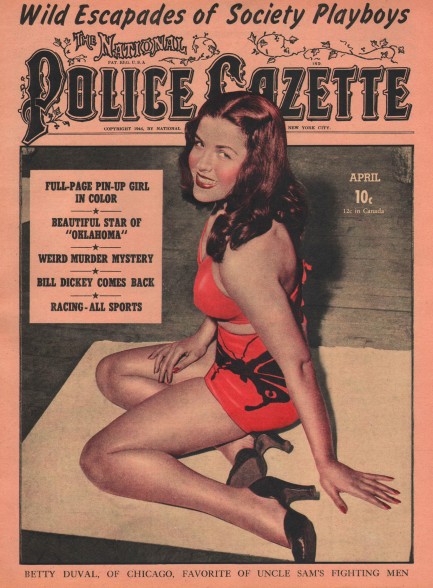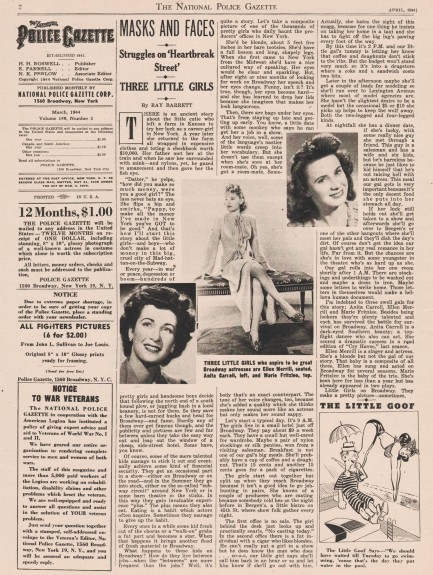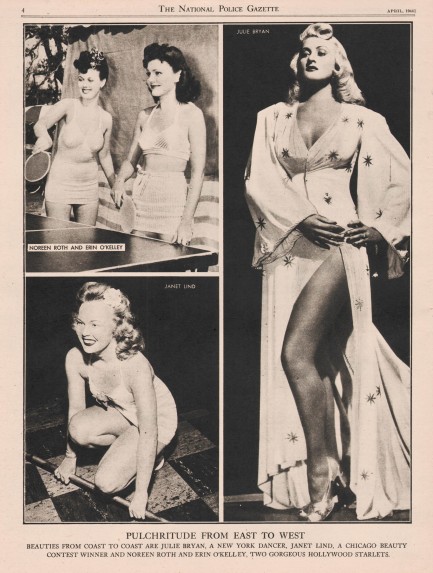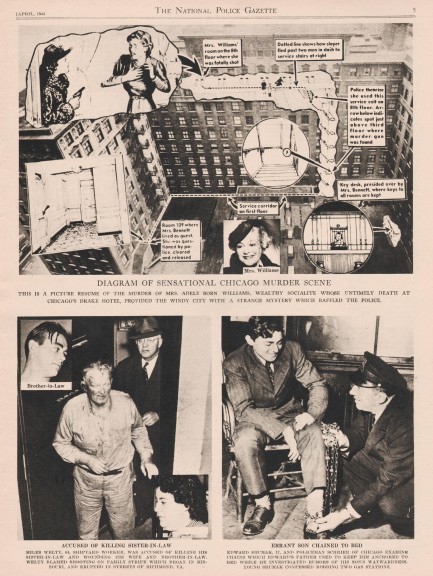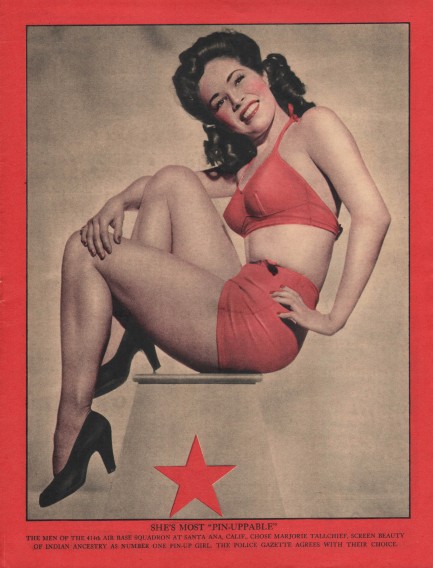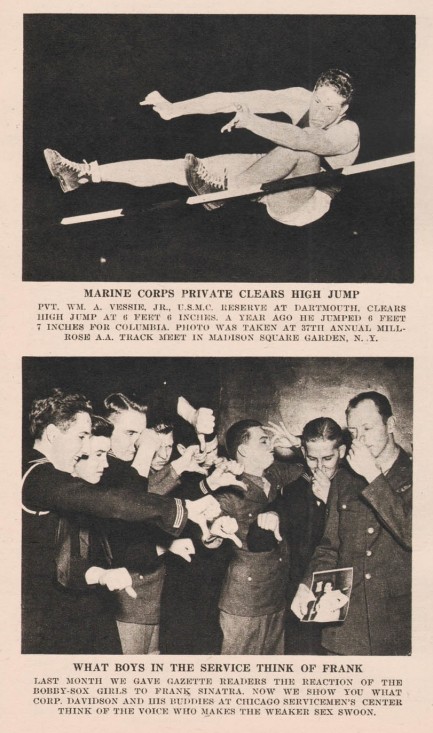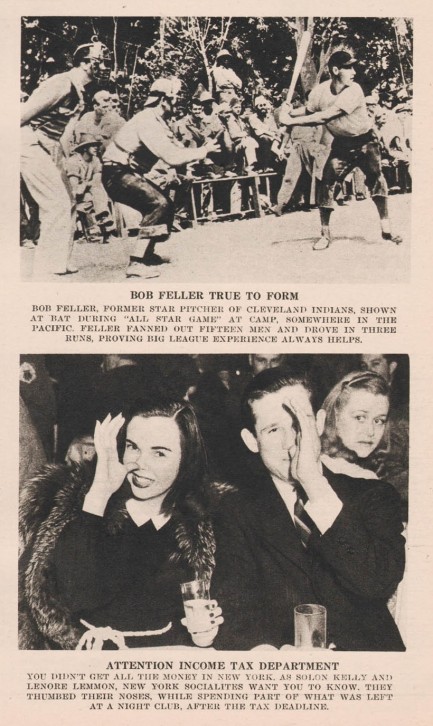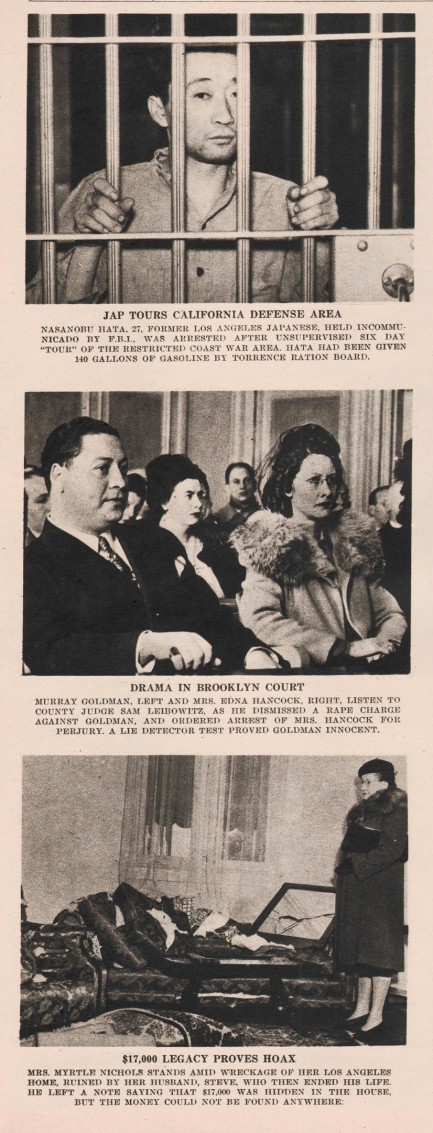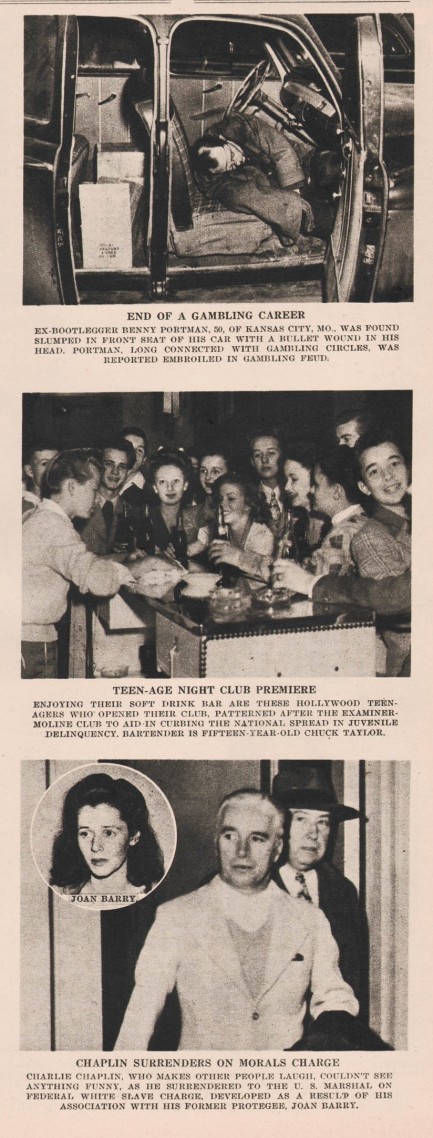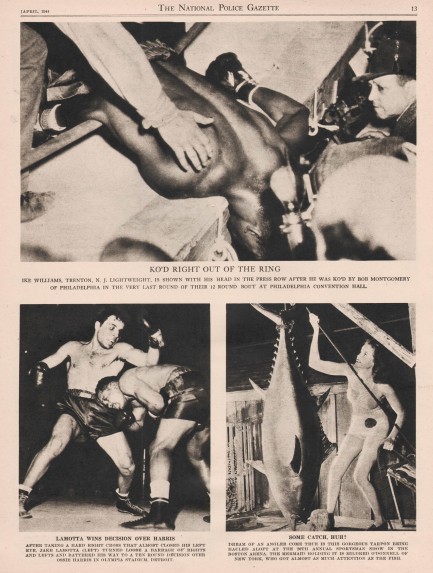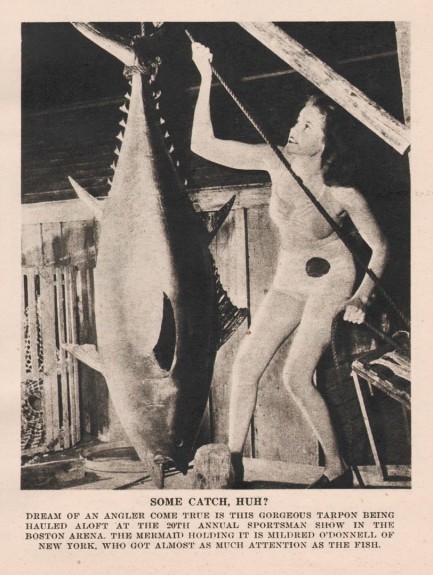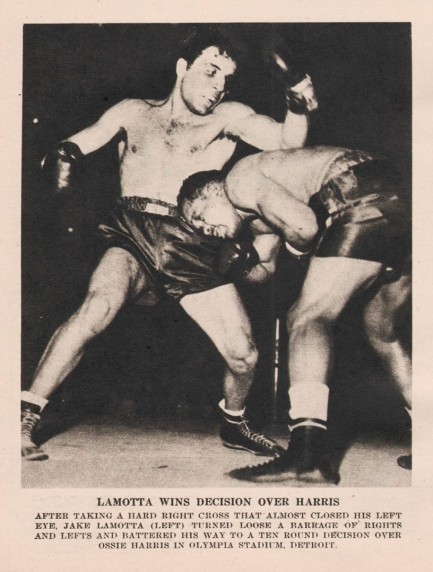 The more things change the more they stay the same. 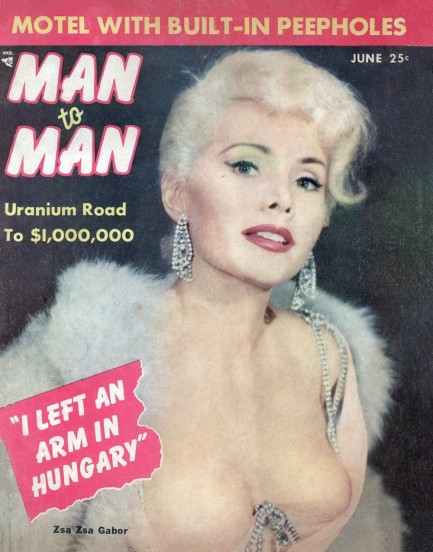
Reading old magazines has helped teach us that things have not changed as much as some people would like you to believe. This issue of Man to Man hit newsstands this month in 1957. We've now seen trans stories in nine mid-century publications, and keep in mind we've not seen even a fraction of a percent of all the magazines ever published. The person under the spotlight this time is Abdel Ibrahim, and Man to Man editors say about him merely that he's “changing from a man into a woman,” and, “he's in an Egyptian hospital for an operation designed to help.”
This dispassionate tone has been the norm, from what we've seen, and shows yet again how the process of creating hysterical prejudice works. First, you train people to believe something unprecedented is occurring, then you frame that as a threat to people's “way of life.” But these old tabs serve as an inconvenient truth—sex reassignments have been around for quite a while, and before then, men who passed or attempted to pass as women go back into the depths of history.
During the mid-century era many trans people became national or international celebrities, from Coccinelle to Christine Jorgensen to Ajita Wilson. The knowledge of transexuals was so mainstream that the top-selling tabloid Whisper even published a 1965 story titled, “A Doctor Answers What Everyone Wants To Know About Sex Change Operations,” with the key word in that header—everyone—suggesting that the dominant reaction socially speaking was neither anger nor fear.
Elsewhere in Man to Man you get Zsa Zsa Gabor, including in one photo that looks familiar, sex myths of 1957, motel peepers, war, crime, fiction, a bit of nudism, and a bit of burlesque. You also get two pieces of art from popular illustrator Mark Schneider, who we've highlighted before. He mainly worked for Sir! magazine. We put together a collection of his covers for that publication which you can see here. You can also see three more issues of Man to Man by clicking its keywords below and scrolling down.
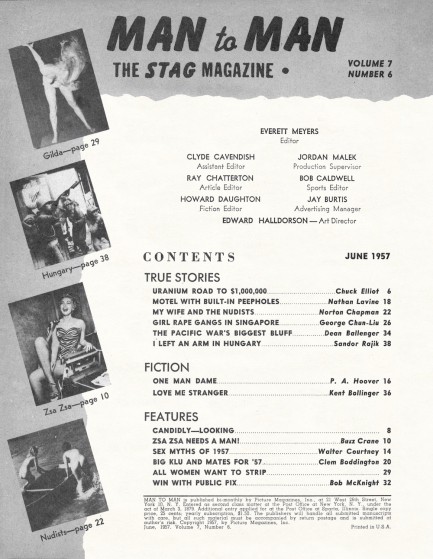 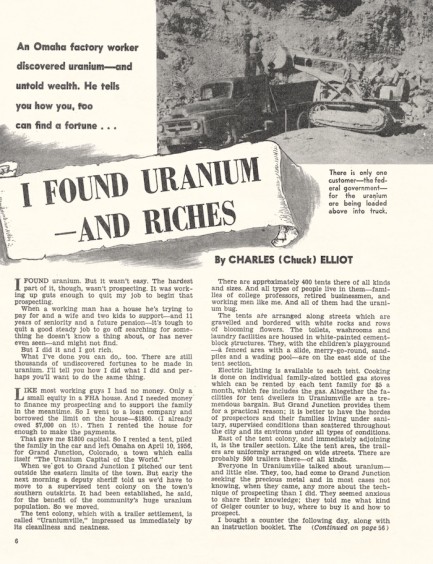 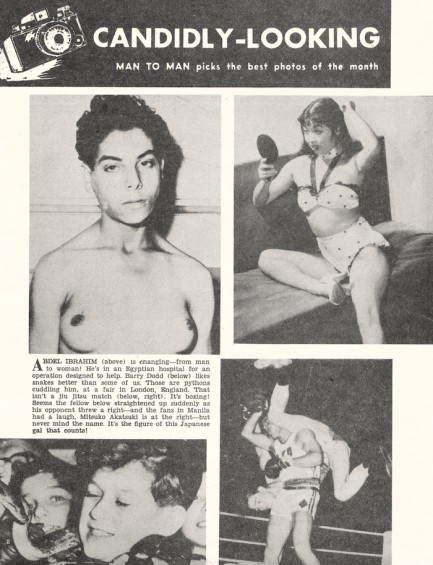 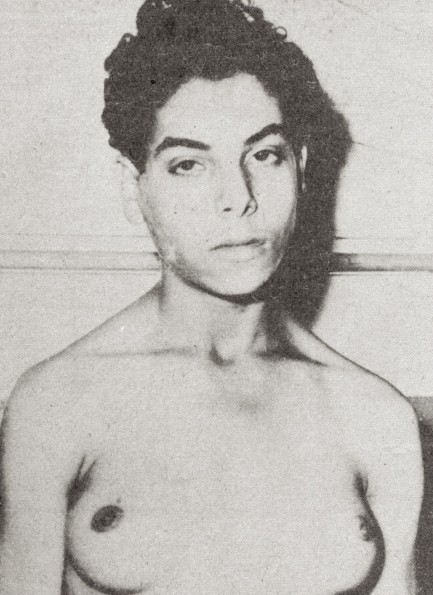 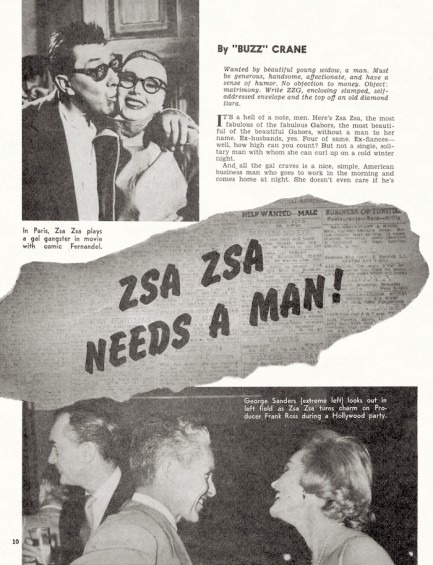 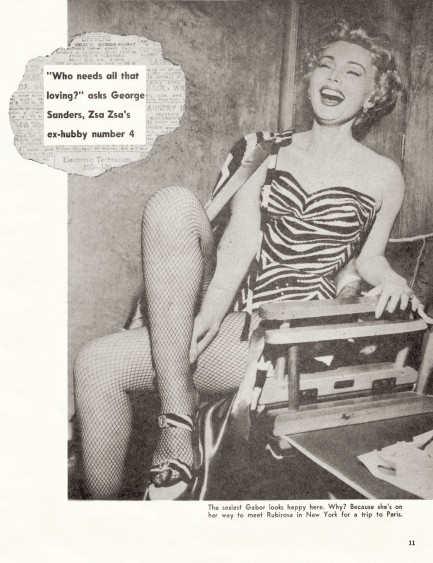  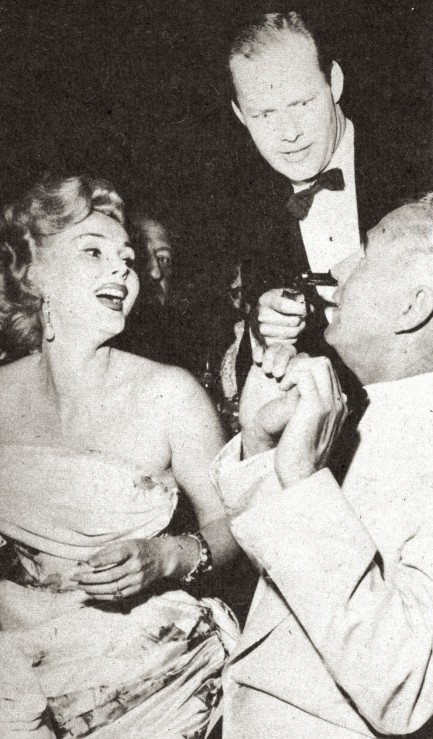 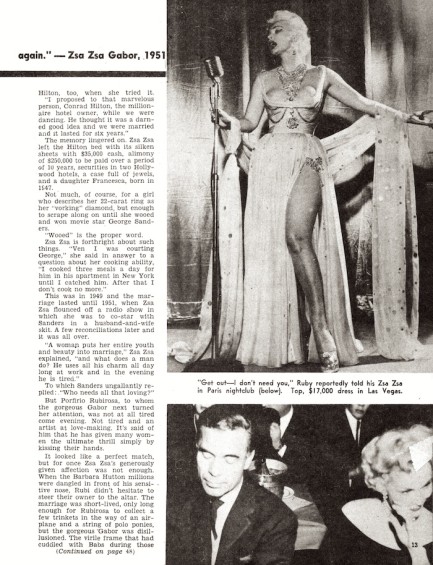 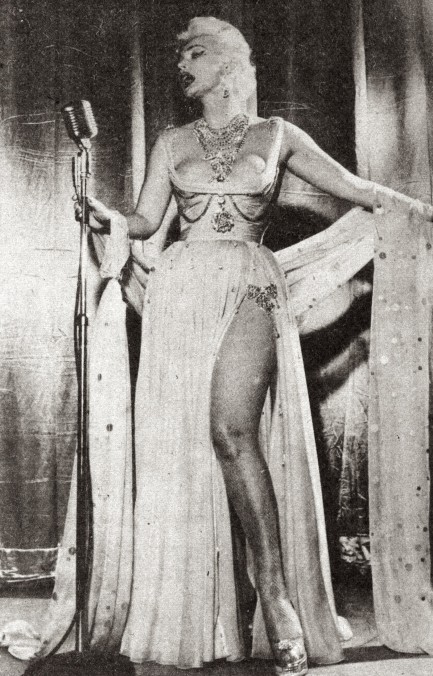 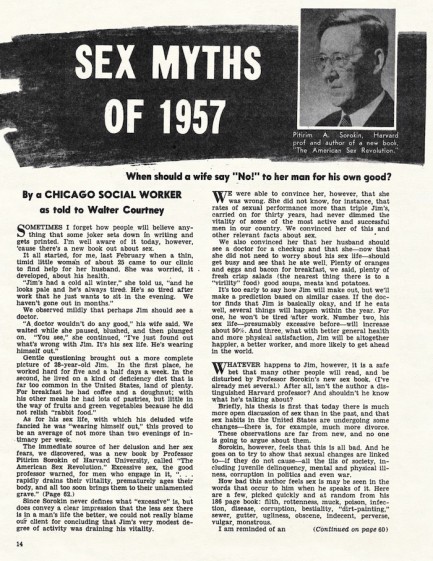 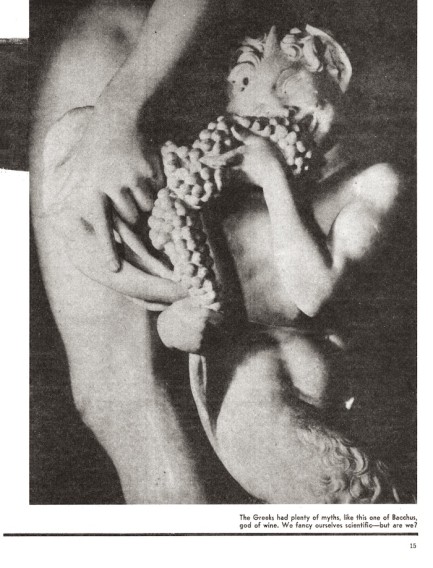 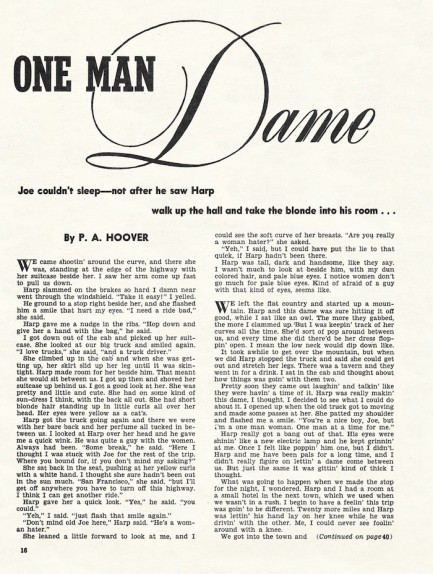 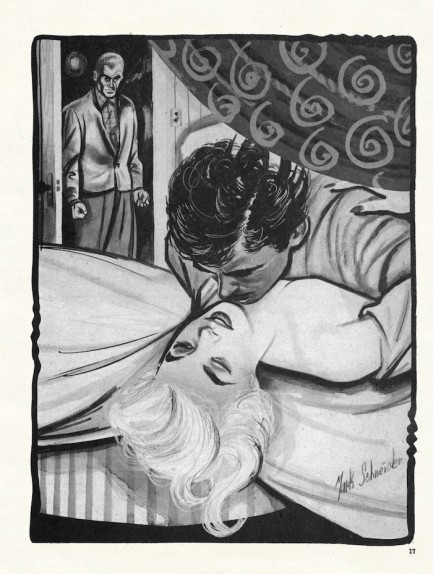 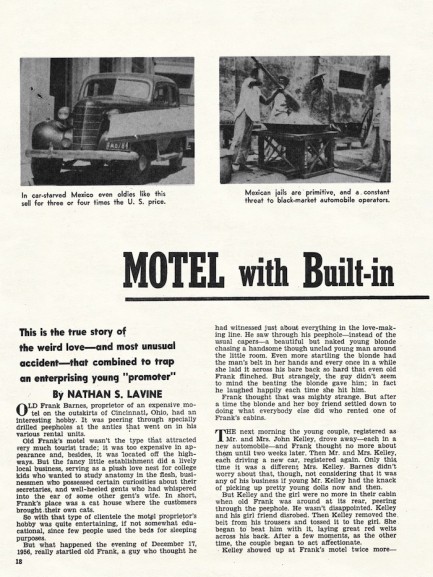  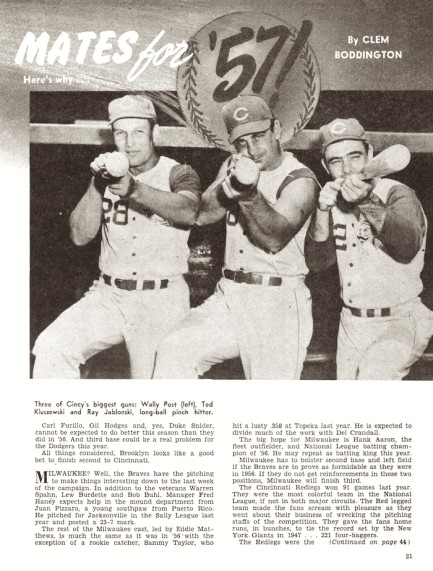 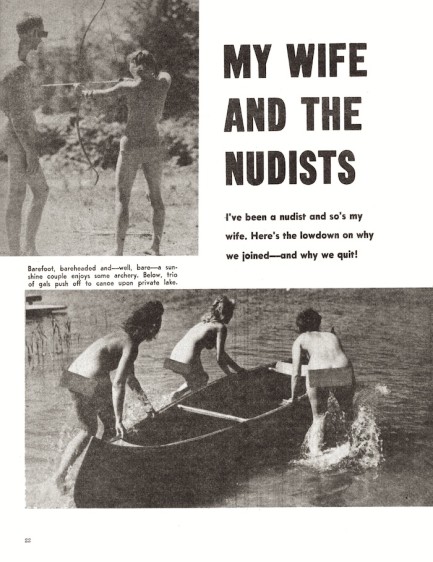  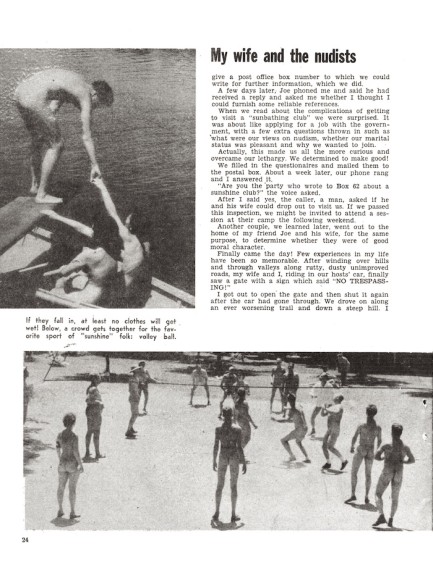 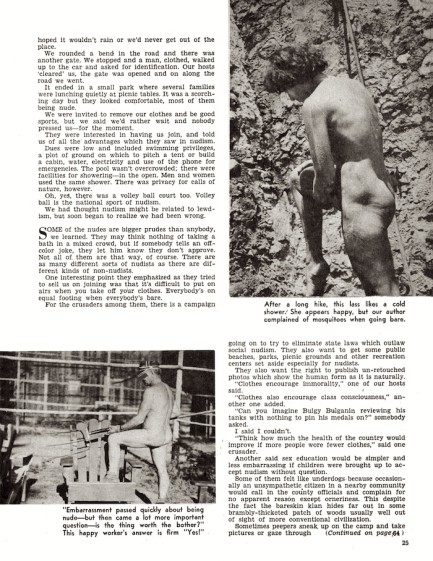 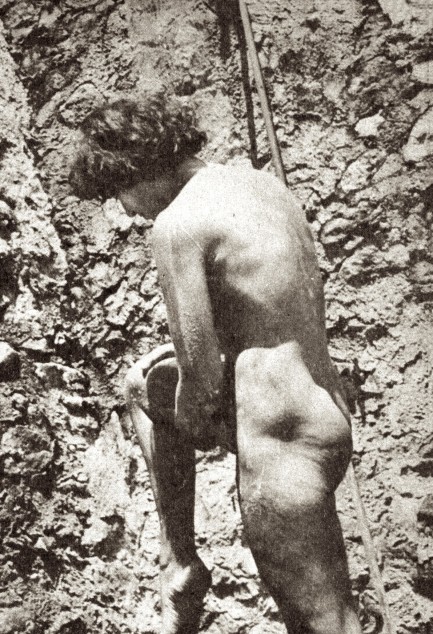 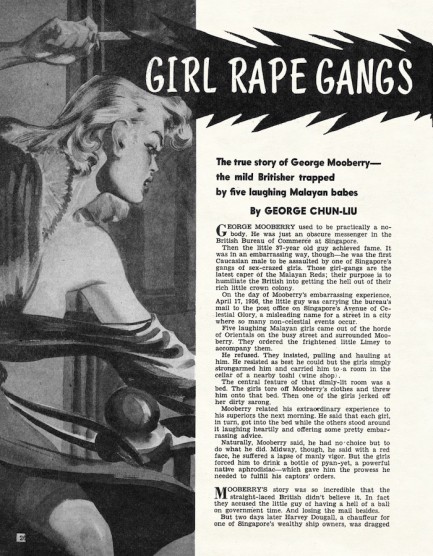 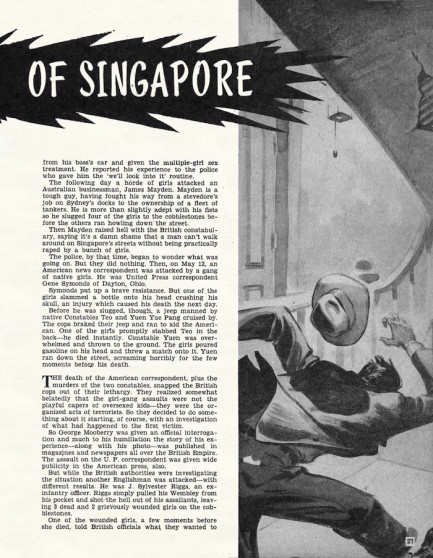 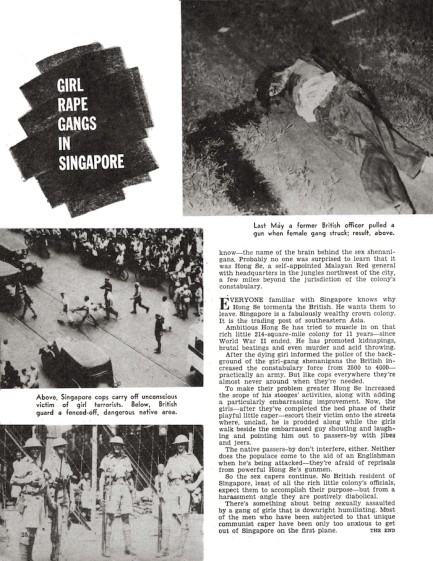 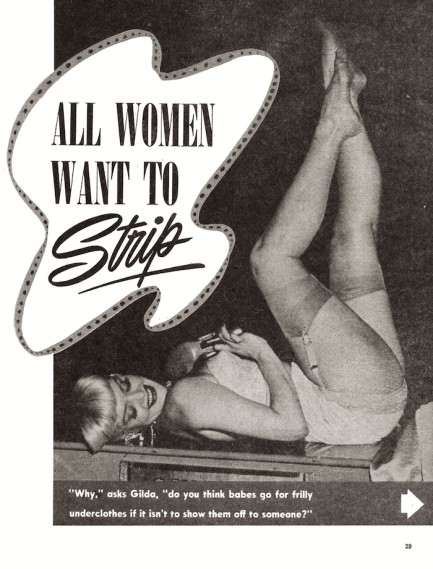  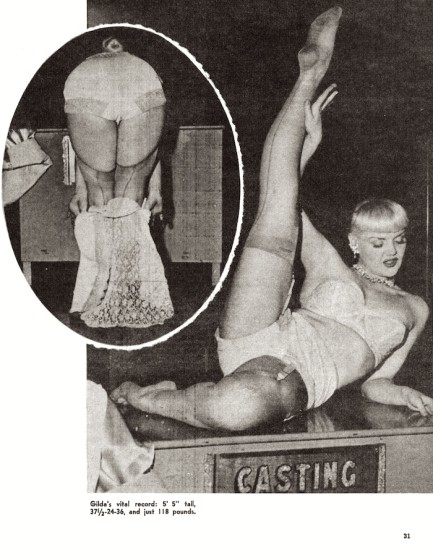 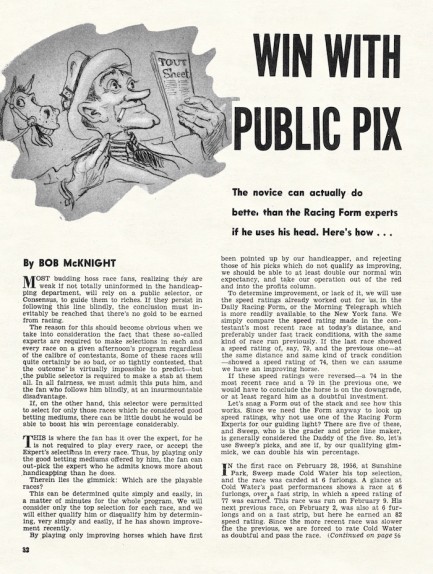 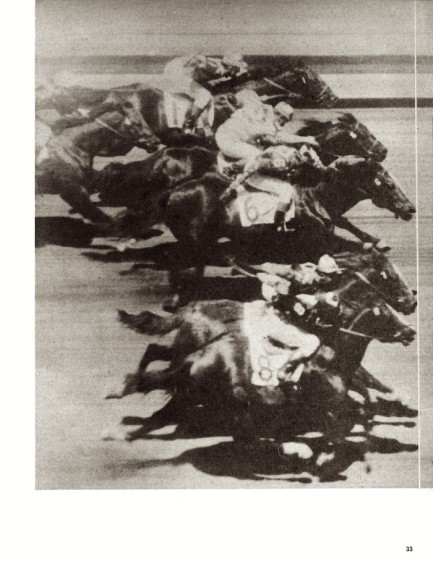 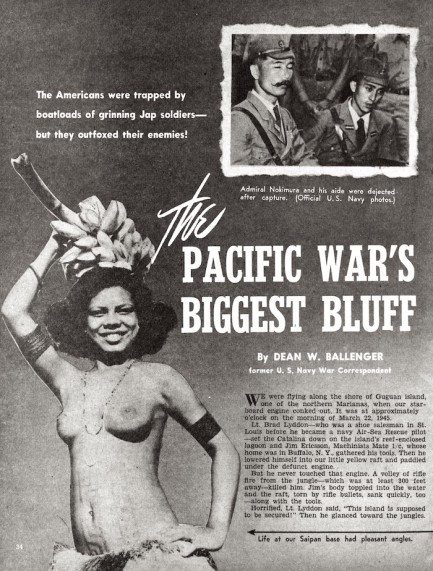 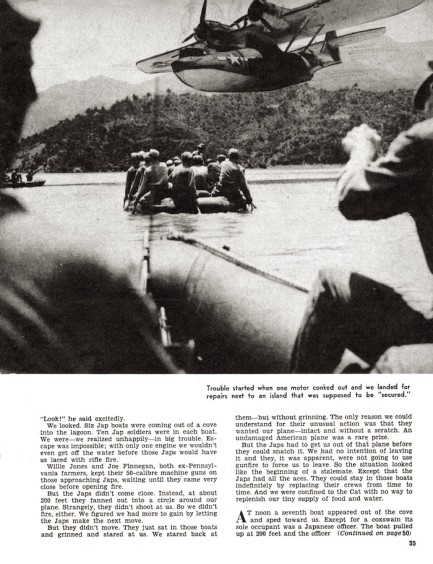 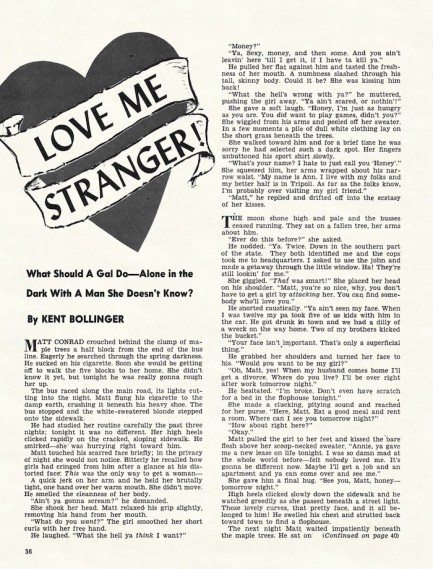 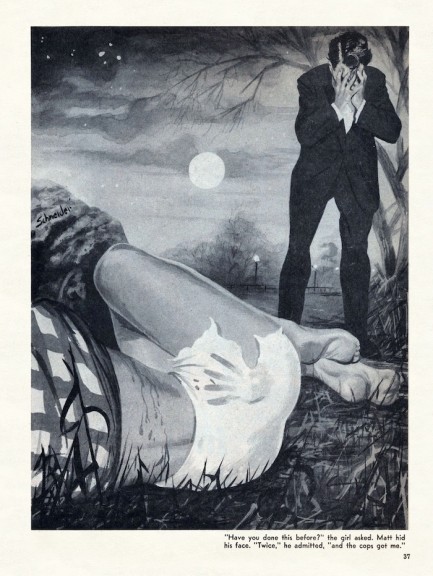 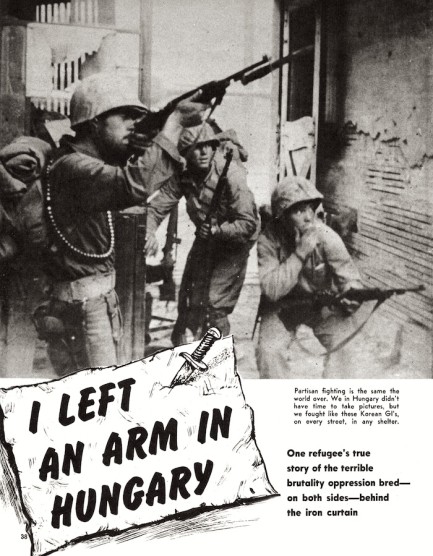
 This is the best Laff you'll have all day. 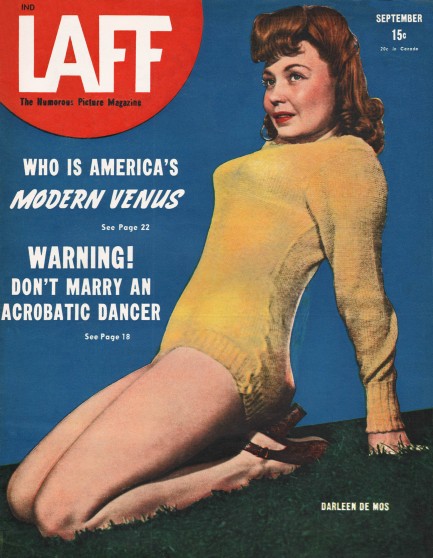
We've posted three issues of Laff magazine over the years, and we return to that publication today with an example from this month in 1946 featuring starlets, showgirls, and burlesque dancers of the highest order. You get Jane Russell, Adele Mara, Vera Ellen, and Myrna Dell, amongst others, but the winner in these pages is Acquanetta, aka the Venezuelan Volcano, who gets a striking tropical themed centerfold photo. In addition, you get a bit of sports coverage—specifically baseball, which is appropriate with the MLB playoffs starting tonight—as well as numerous cartoons. These cartoons—the laffs in Laff magazine—tend to be sexist by today's standards, but then so is this entire website, really, which is an unavoidable side effect of focusing on vintage fiction, art, and photography. We hope the historical significance of the material overshadows all else. In any case, we included the cartoons despite their mostly lame humor, due to the fact that they're high quality illustrations well worth seeing. All that and more appears here in forty-plus scans and zooms, and you can see the other issues of Laff by clicking its keywords below. 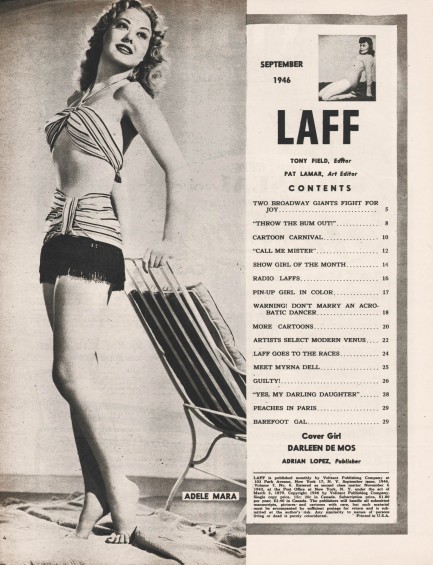 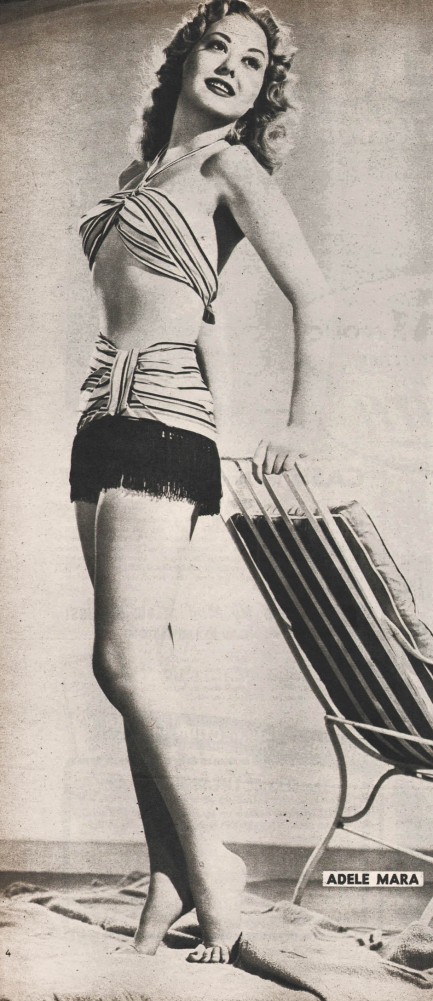 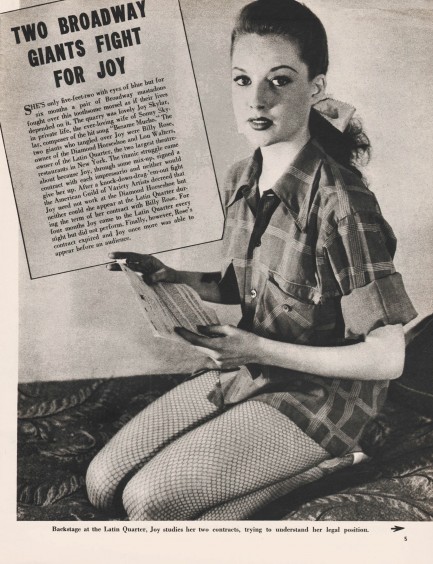 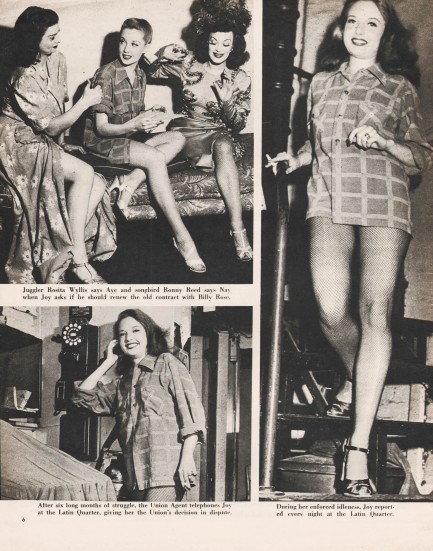  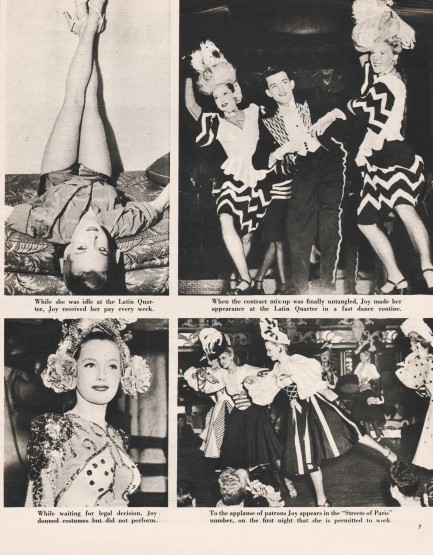  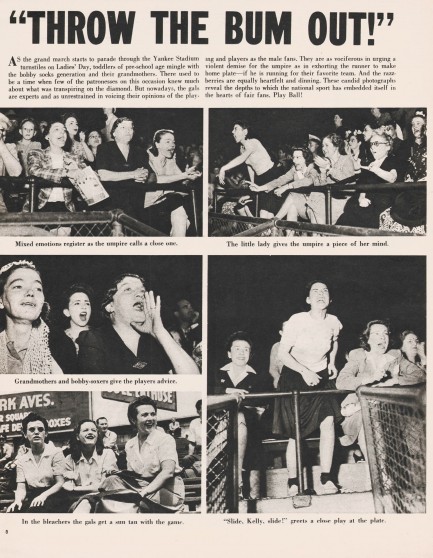 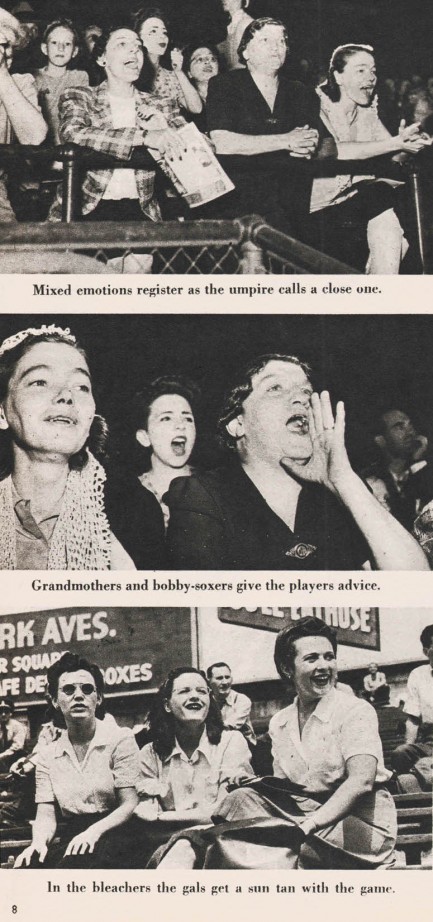 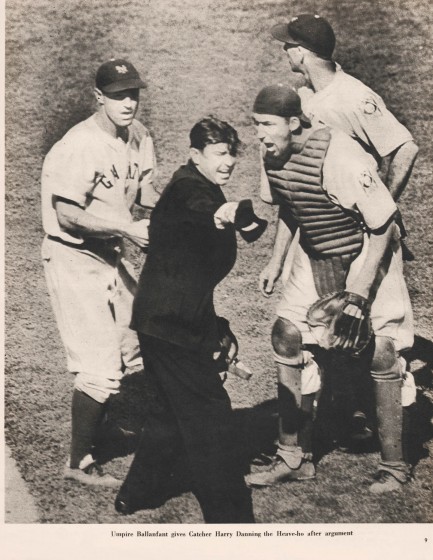 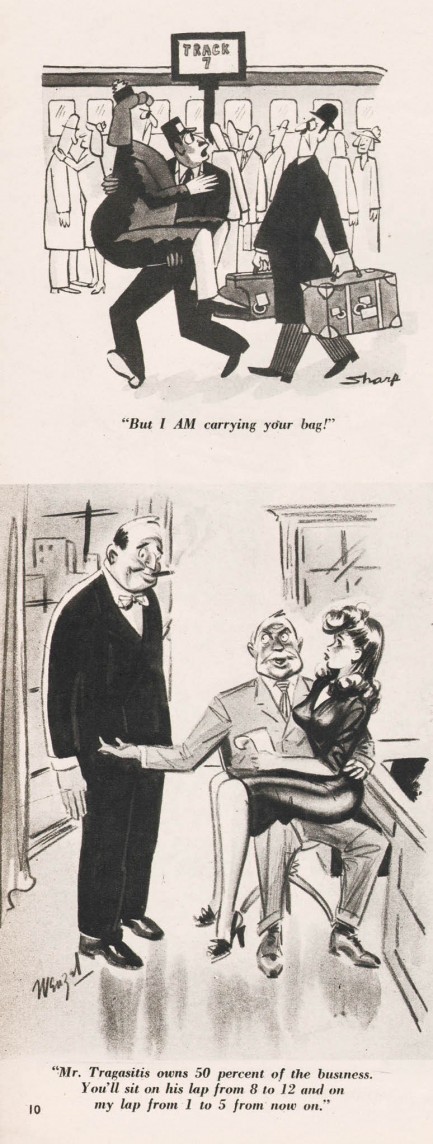 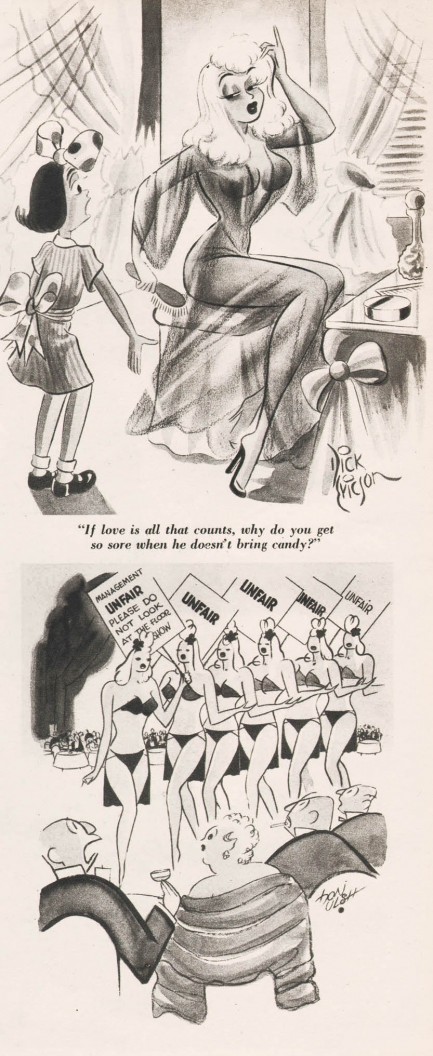 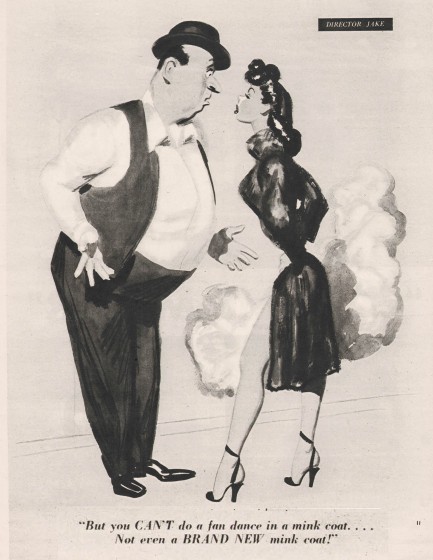 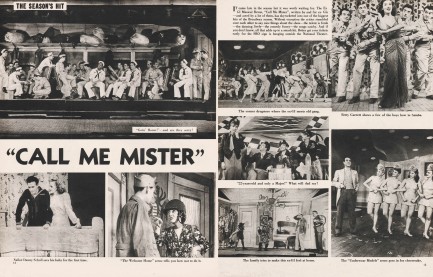 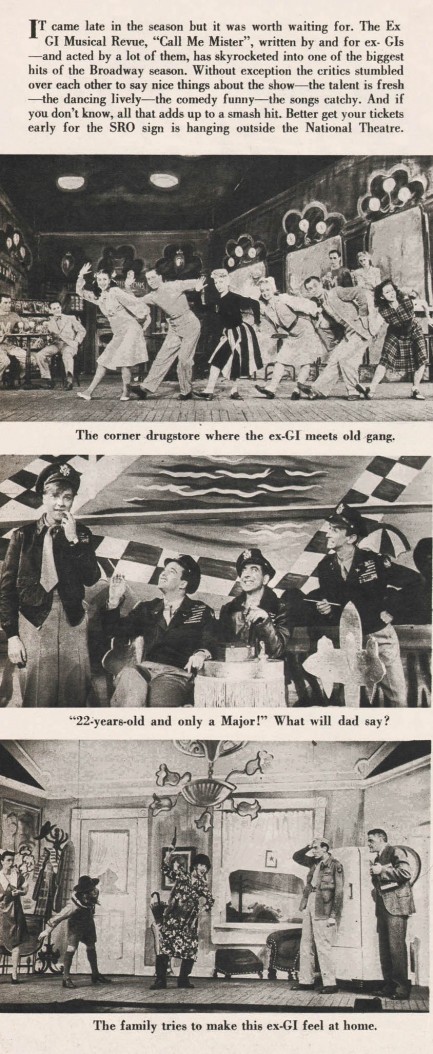 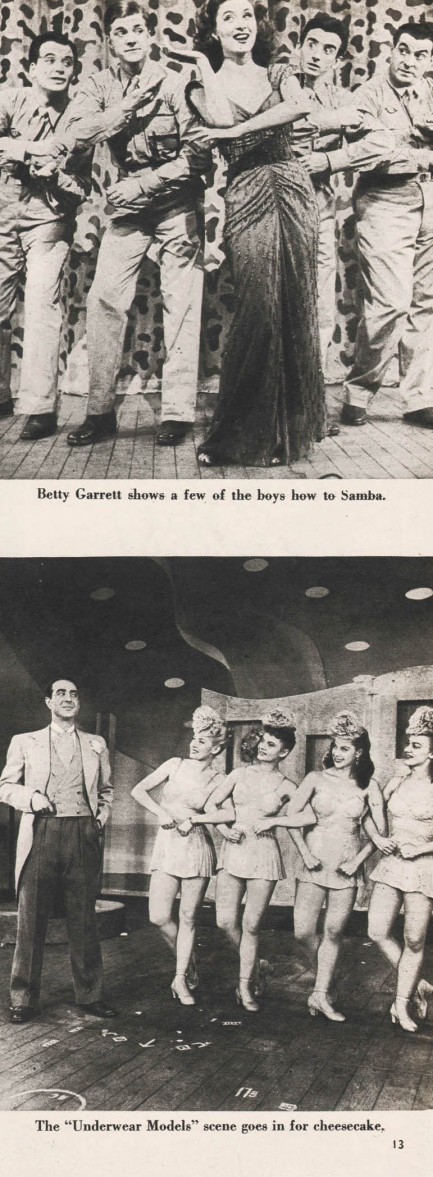   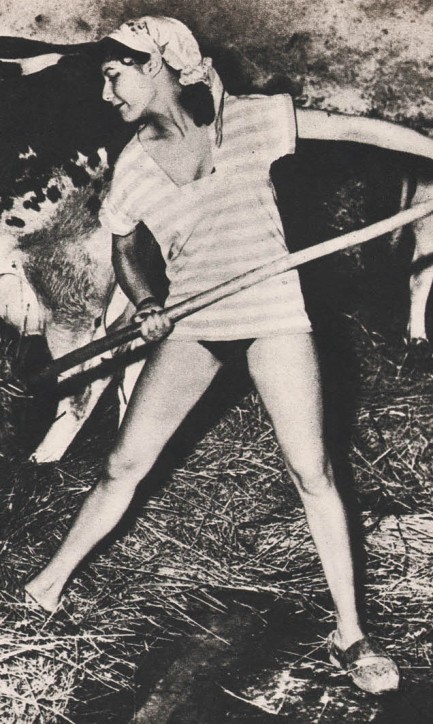 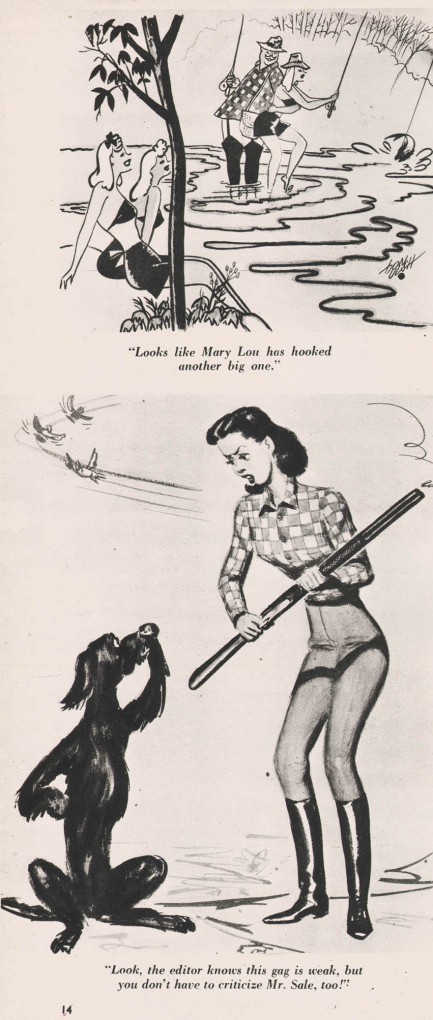 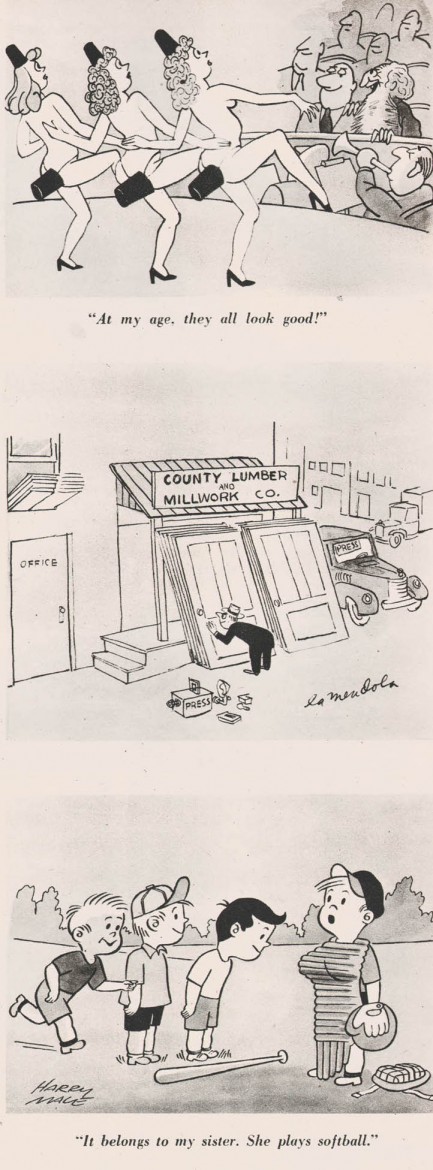 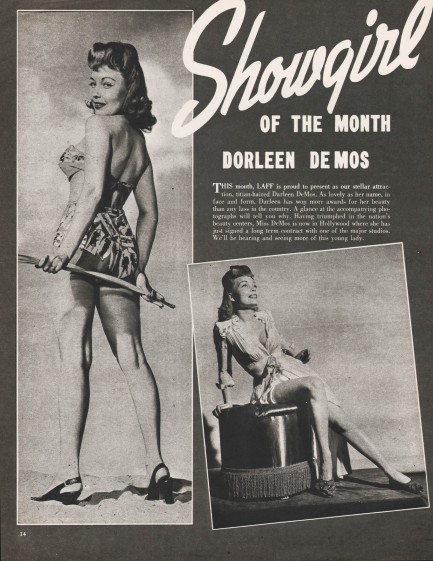 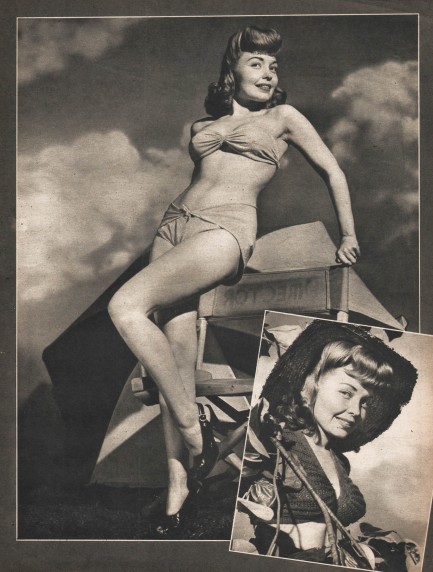 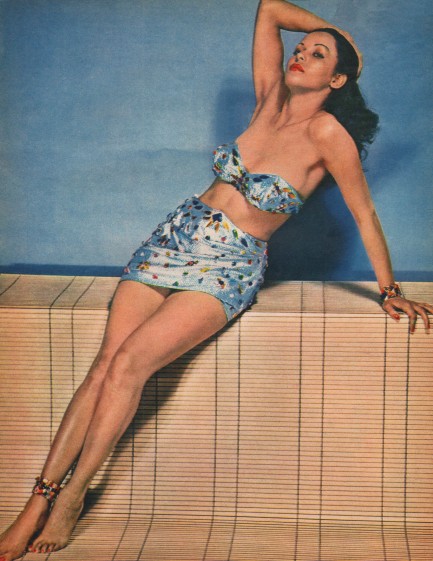 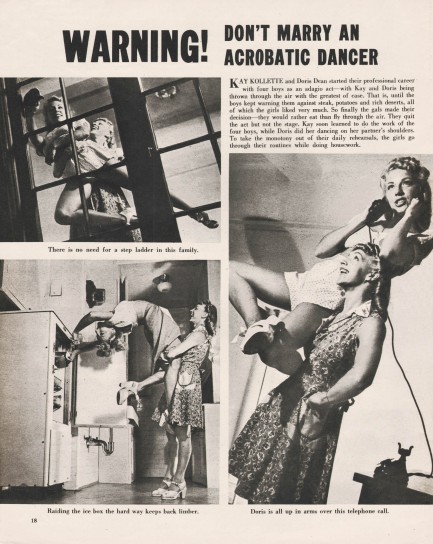 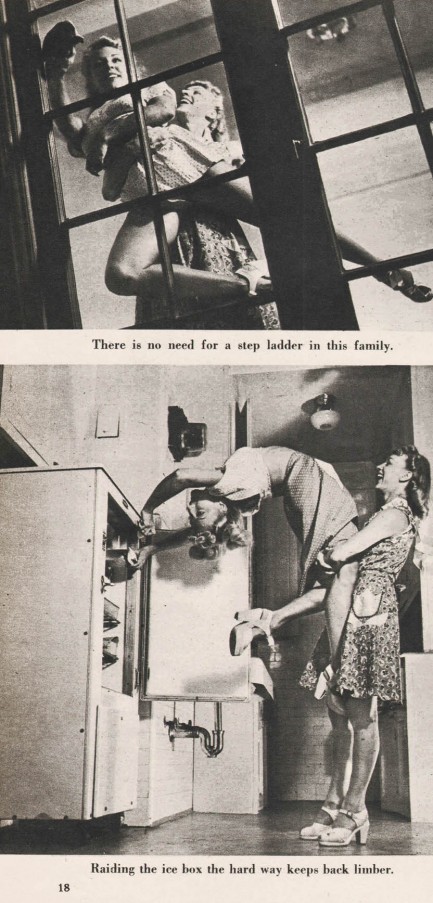 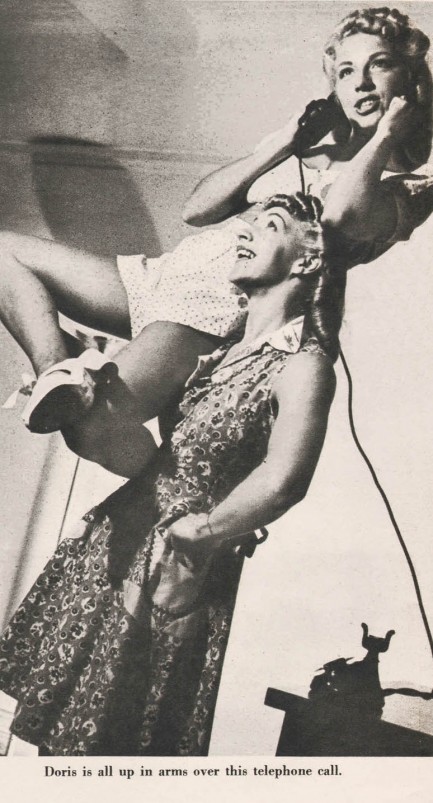 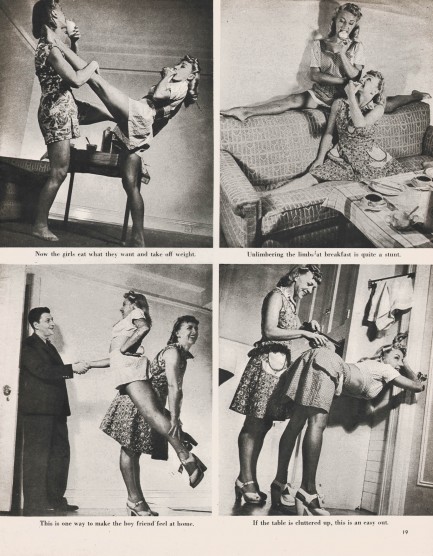 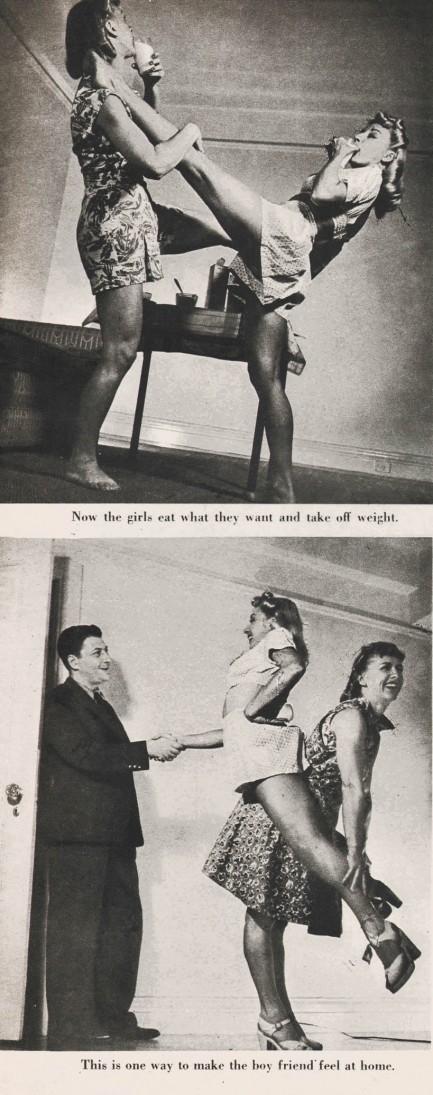 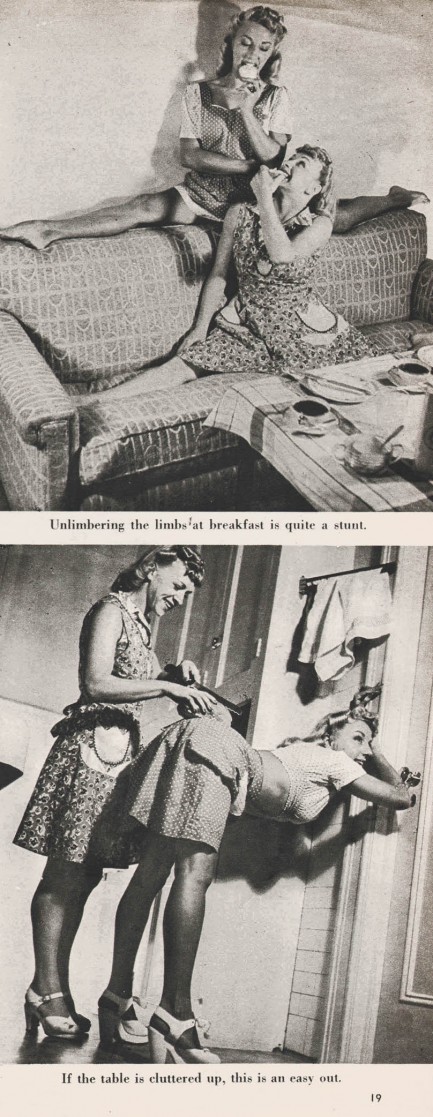 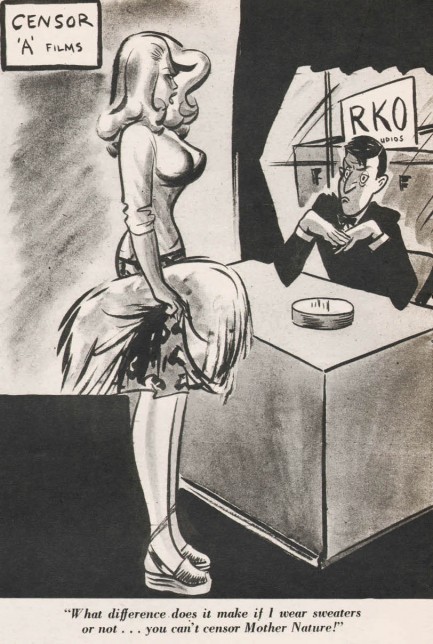 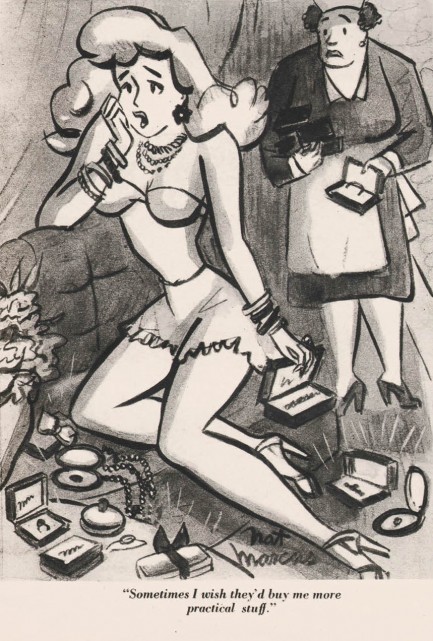 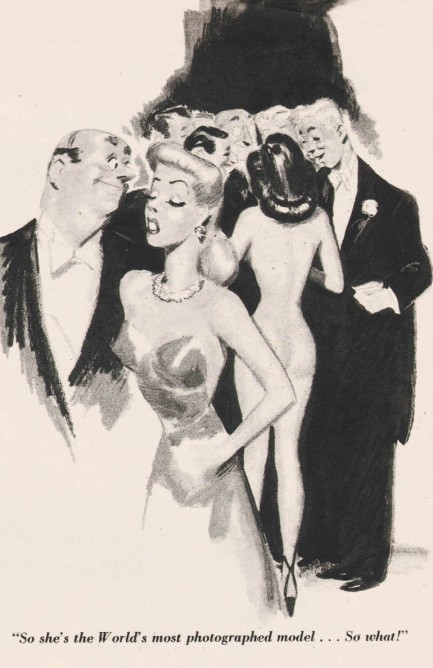 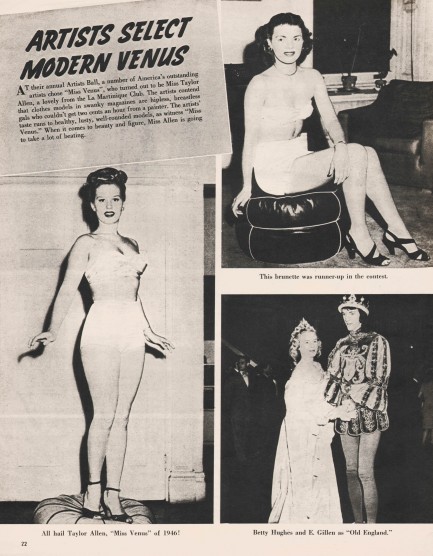 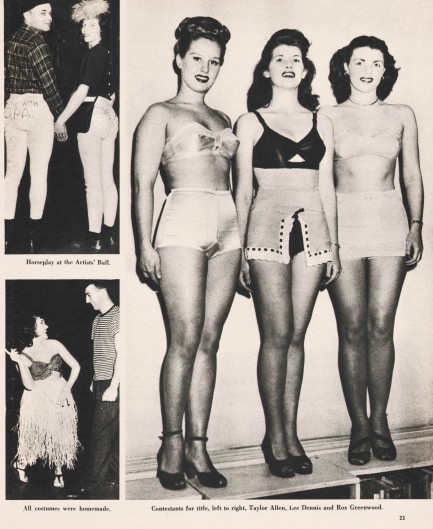 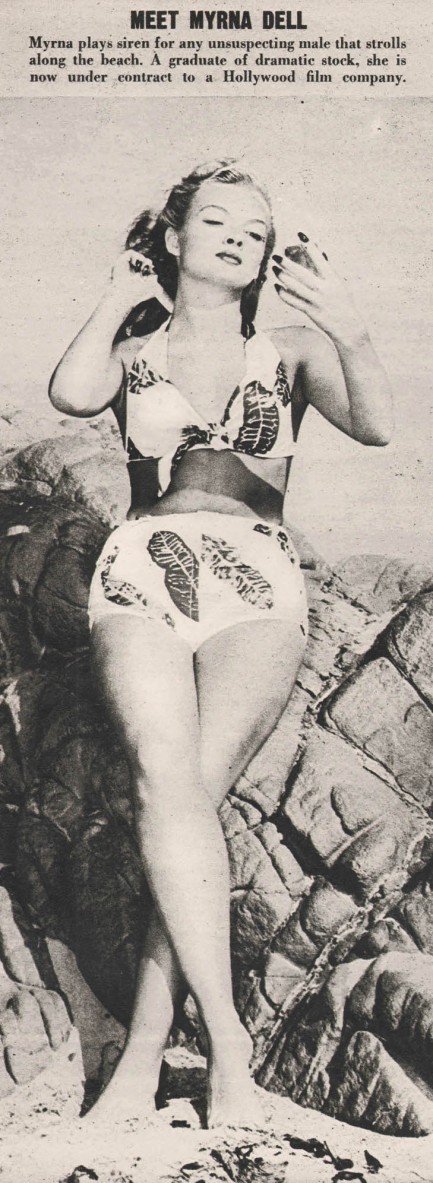 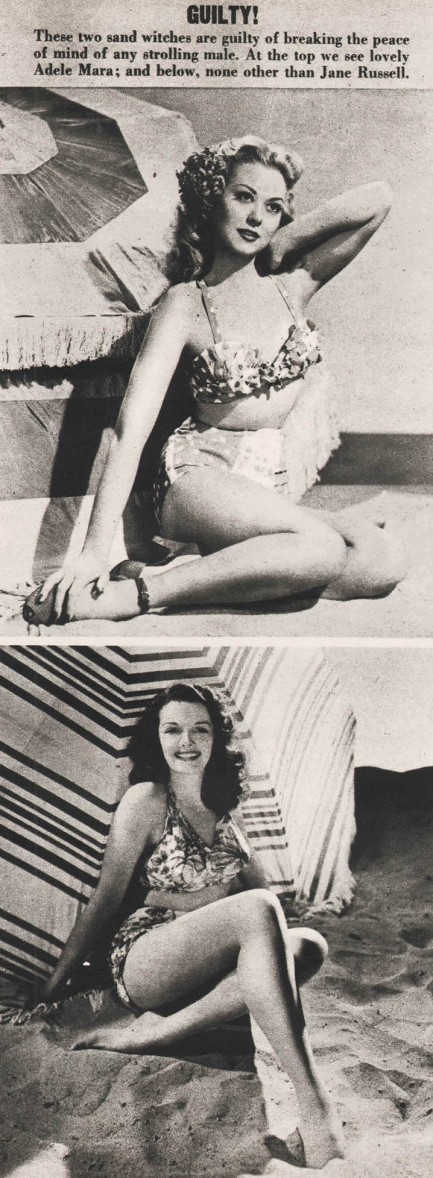 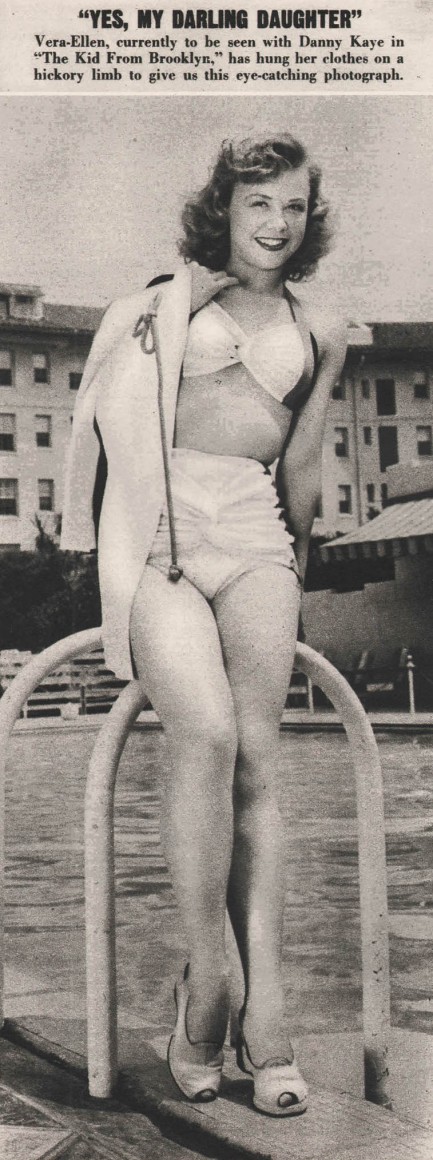 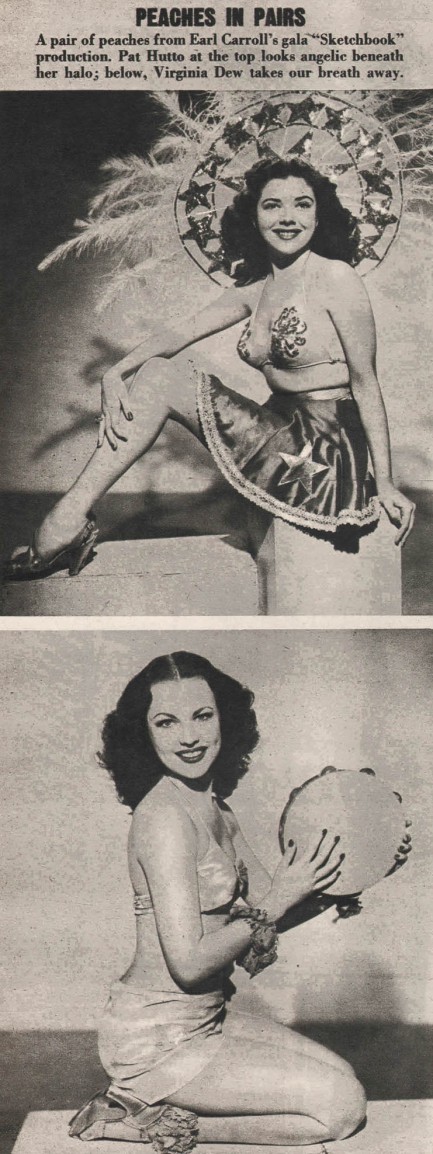 
 Politics, show business, and sports collide in one of the U.S.'s oldest magazines. 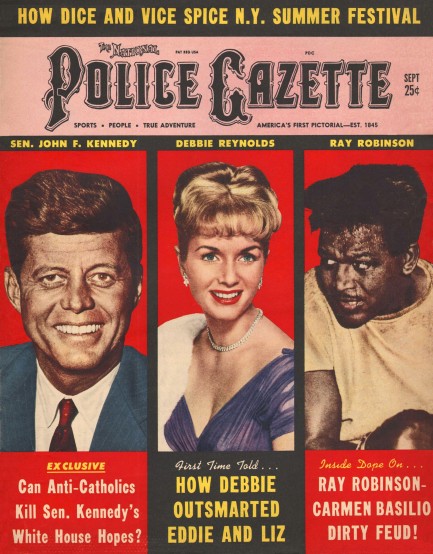
We've shared lots of issues of The National Police Gazette, but this September 1959 cover, more than others, neatly emphasizes the magazine's three focus areas—politics, celebrity, and sports. Dishing on political figures and celebs was typical for mid-century tabloids, but Gazette's devotion to sports made it unique. And its favorite sport was boxing. Every issue we've seen has reserved a chunk of pages for the sweet science. In this case the scientist is Sugar Ray Robinson, and the story about him discusses the rivalry he had with Carmen Basilio. The two fought twice when Robinson was in decline at the tail end of his career. Sugar Ray lost the first bout—considered by boxing historians to be one of the greatest fights ever—and a year later won the second. Every boxer declines, but Robinson's career record stands tall—he fought two hundred times and tallied 173 wins, 108 of them by knockout. But for all that hard work he ended up—as boxers often do—flat broke. Police Gazette was launched in 1845, as incredible as that seems, and was still going strong more than a century later when this issue appeared. We have about twenty-five scans below and seventy-five more entries on Gazette in the website comprising many hundreds of pages. The easiest way to access those, as well as numerous other mid-century tabloids, is via our tabloid index located here. 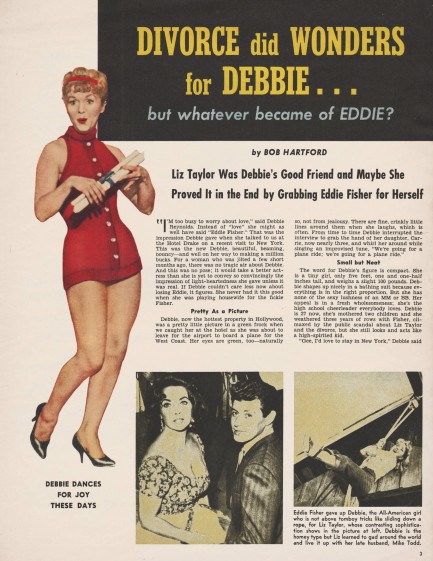 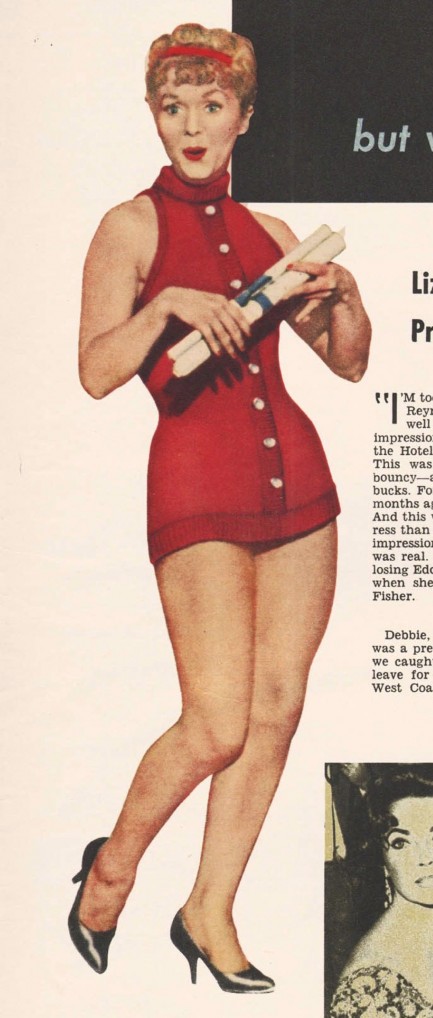 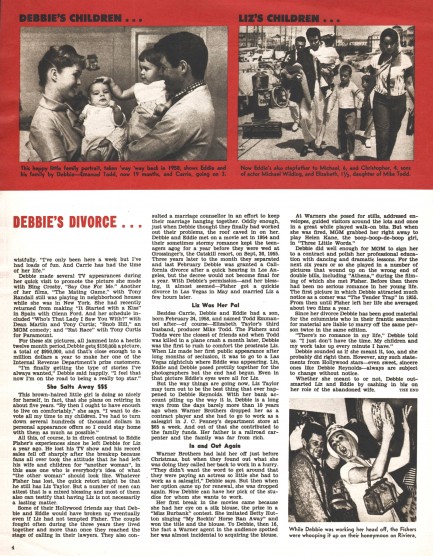 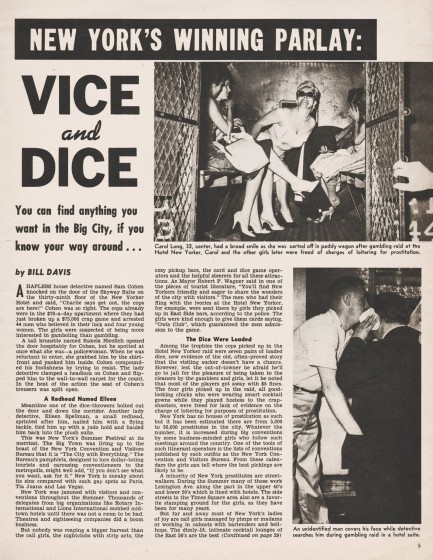 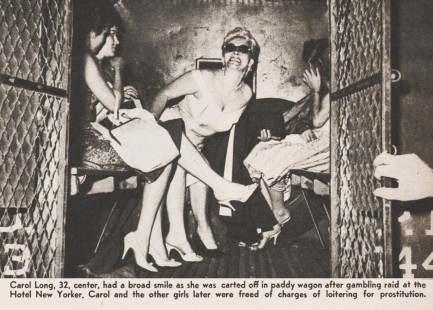 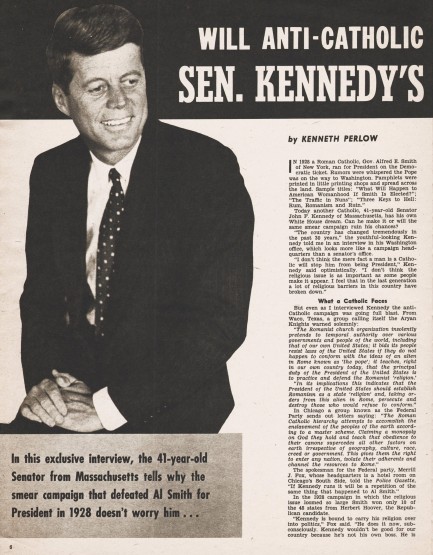 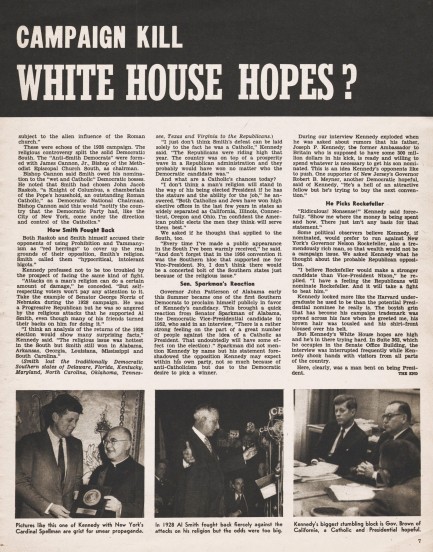 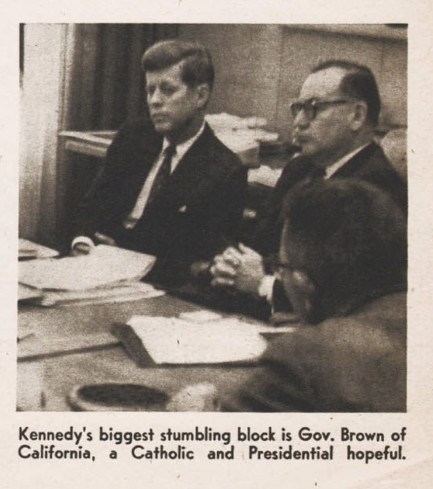 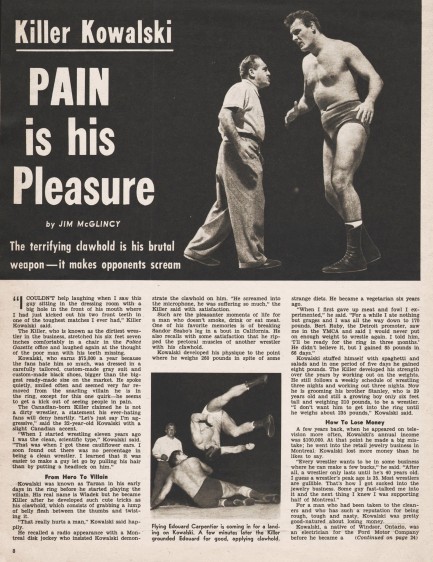  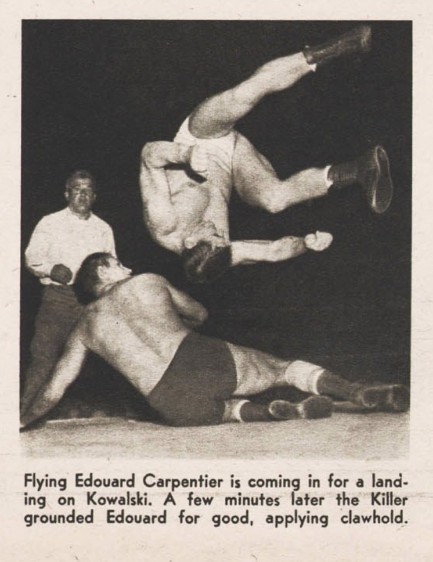 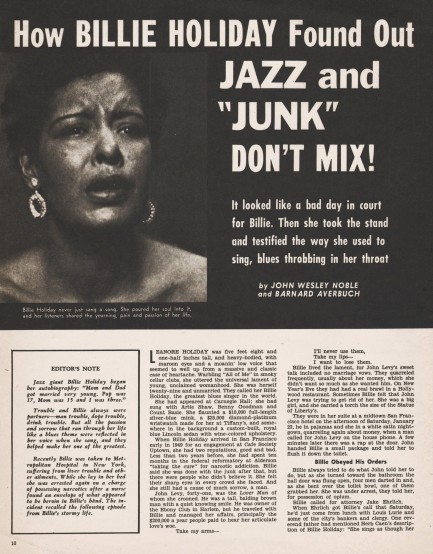 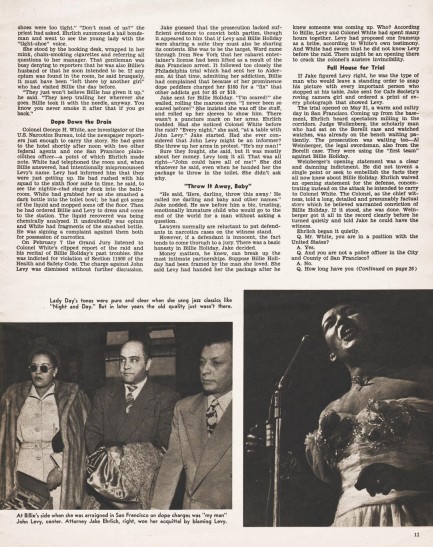 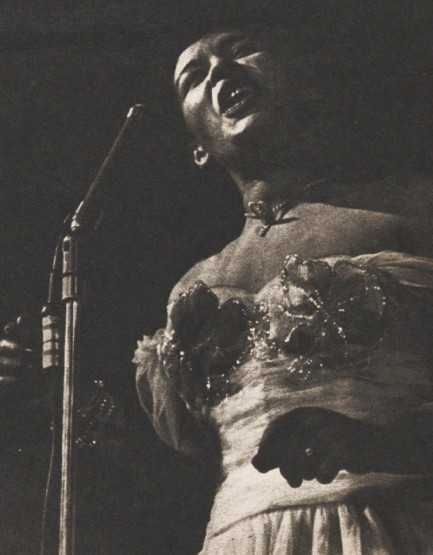 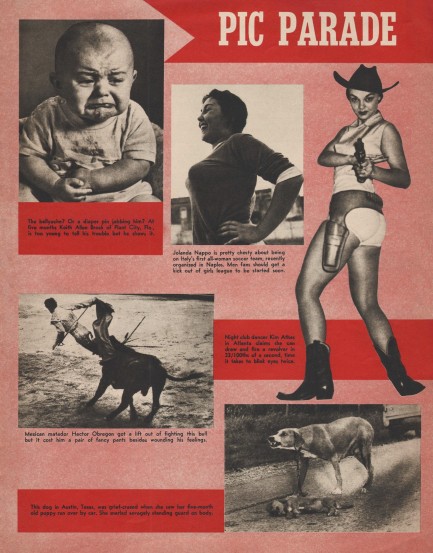 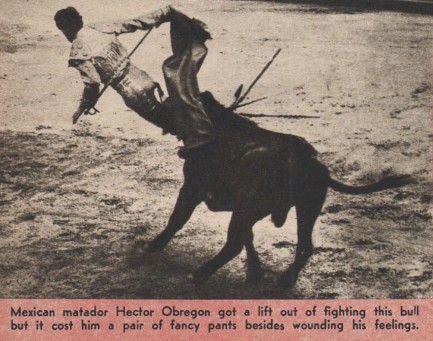 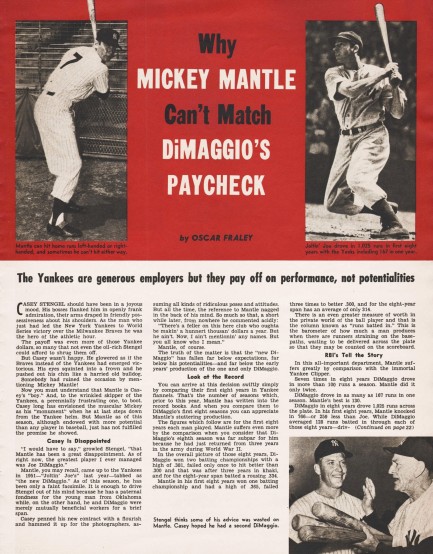 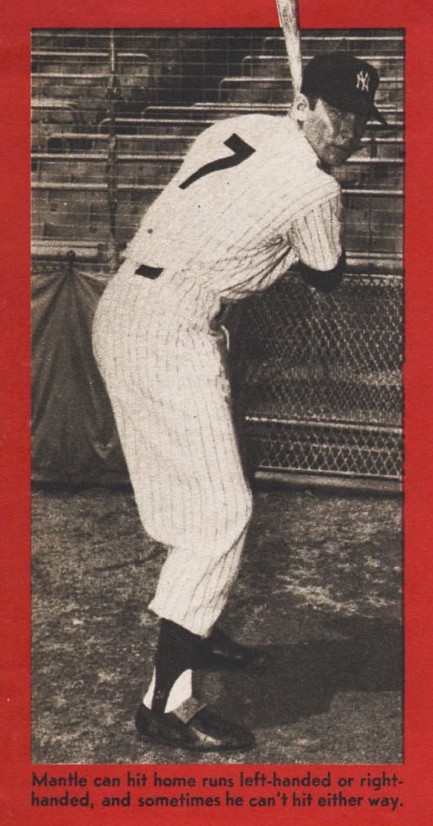 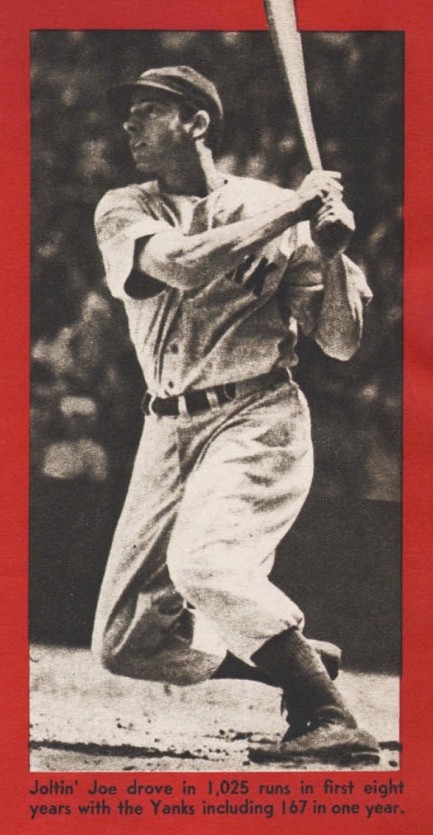 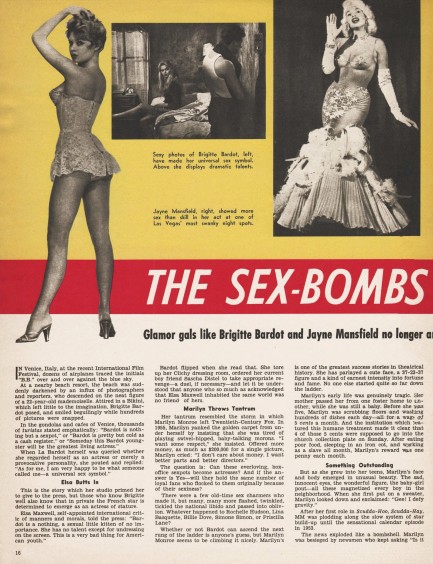 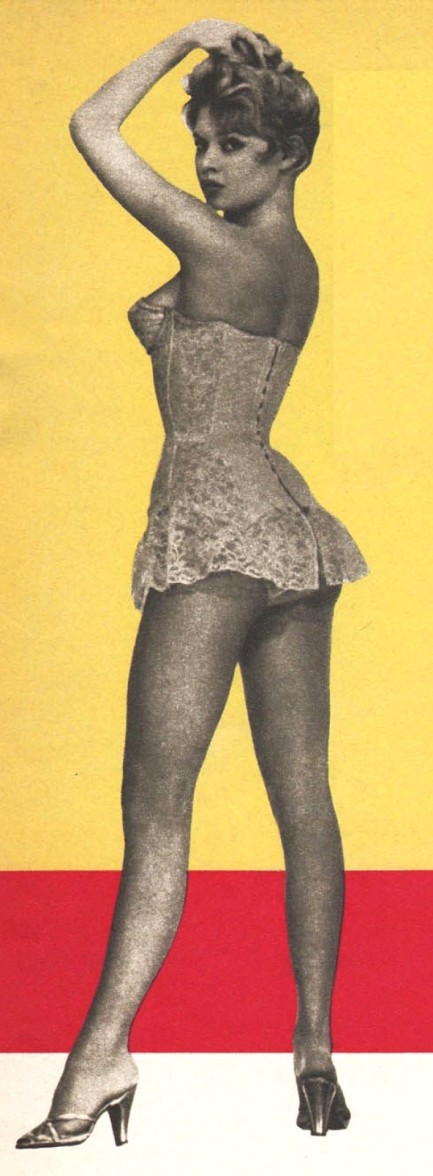 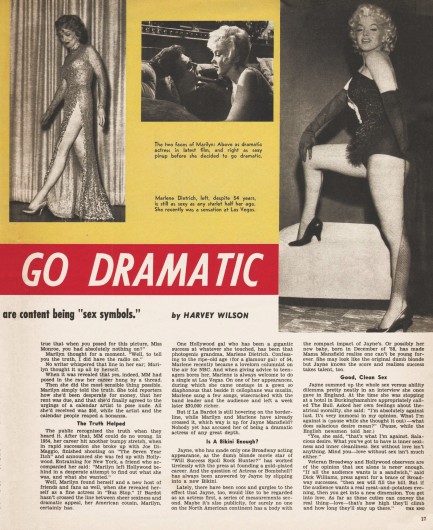 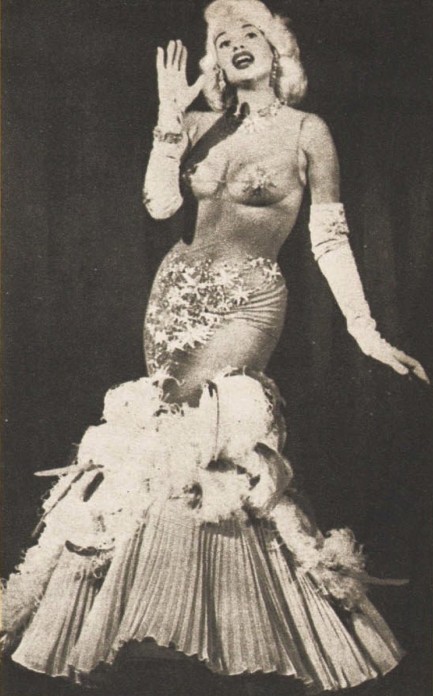 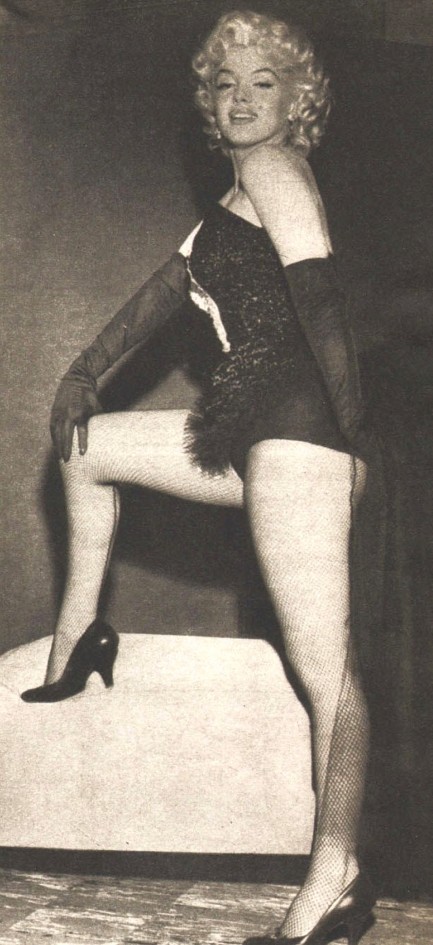  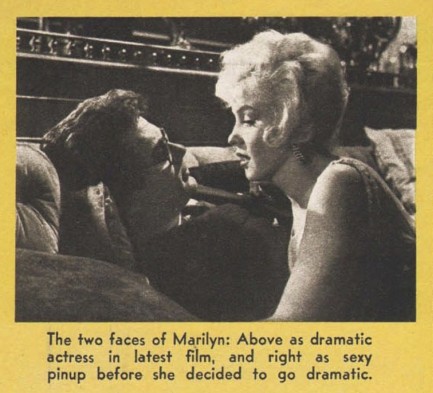 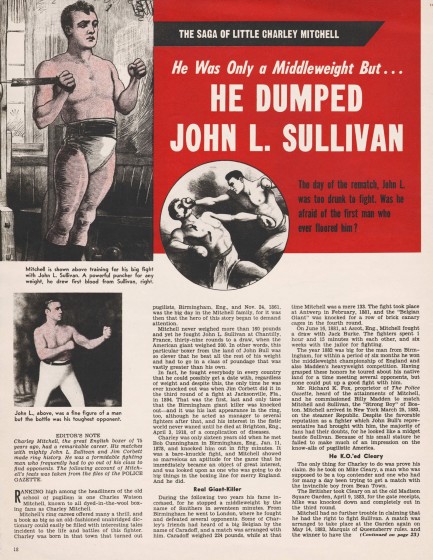 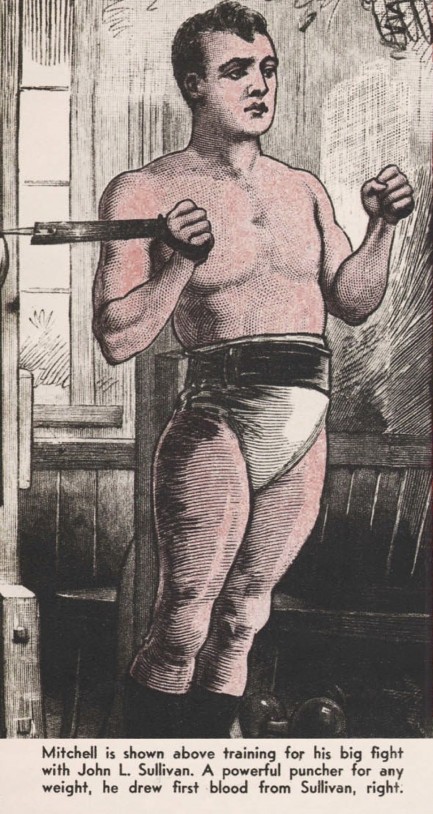 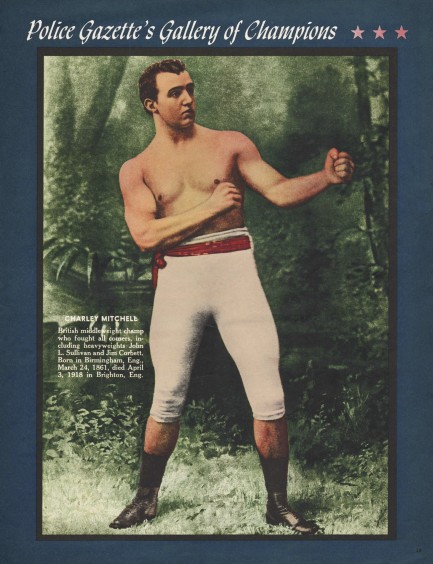
 A signing of things to come. 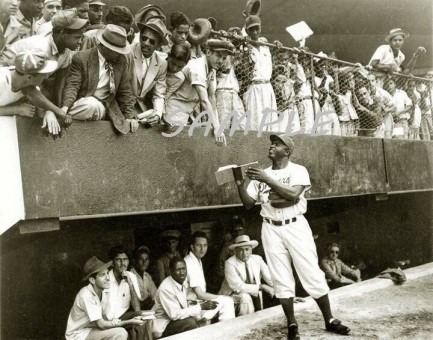
Above is a photo of Brooklyn Dodgers star Jackie Robinson signing autographs for Cuban fans in Havana during the spring of 1947. The Dodgers had used Havana’s La Tropical Stadium as their spring training base during the 1941 and ’42 seasons, and went there again in ’47 to avoid some of the publicity and hostility that would have surrounded Robinson, who was destined to be the first African American baseball player of the modern era. Even away from U.S. shores it was a trying time for Robinson. Havana was run by Americans interests, and was selectively an apartheid city. Robinson stayed at the Hotel Boston in Old Havana, rather than the grand Hotel Nacional in swanky Vedado with the white Dodgers. This annoyed Robinson, but he needed to focus on his play because, though he had been invited to spring training, he was not guaranteed a Major League roster spot. The pressure must have been intense. Even so, in this photo he takes time to sign autographs for Cuban fans, gracious as always, on the cusp of a career that would redefine what it meant to be a Major League Baseball player.
 Neglected baseball comedy reminds viewers that the American pastime was also the African American pastime. 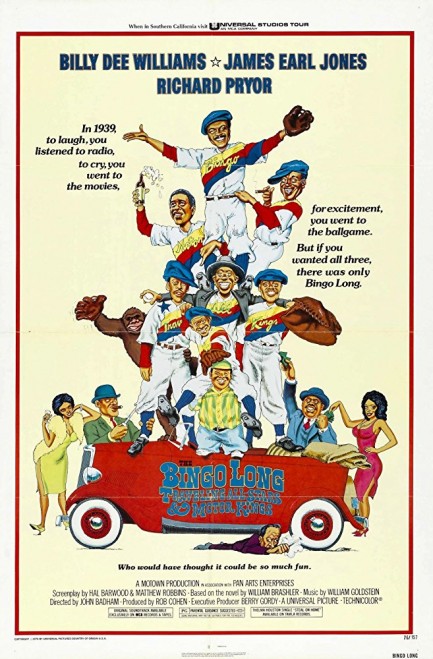
Major League Baseball is known as America's pastime. But for decades it was really only the pastime for whites, due to the fact that black participation was banned by every team, and black spectatorship was limited by apartheid laws. But during that time African Americans formed their own leagues, and those teams and players are part of wider baseball lore. As far as we know The Bingo Long Traveling All-Stars and Motor Kings, which is set in 1939, is the only major movie about black baseballers during the pre-integration era. That alone makes it worth a gander. James Earl Jones, Richard Pryor and Billy Dee Williams in the starring roles are bonuses. The plot involves various Negro League athletes who band together and barnstorm around the U.S. They're trying to get out from under bad contracts with their original teams, or bad jobs in mundane professions, but of course this break toward freedom leads to trouble.
The film benefits from excellent exterior location work. Director John Badham makes use of the old sharecropper cabins, winding rural roads, and rickety wooden stadiums of the American countryside. These would have existed in abundance when the film was made in the mid-1970s, requiring little in the way of set design. The authenticity is palpable. In other areas the film misses the mark, particularly in the tone of the performances, which are Vaudevillian and over-vernacularized. But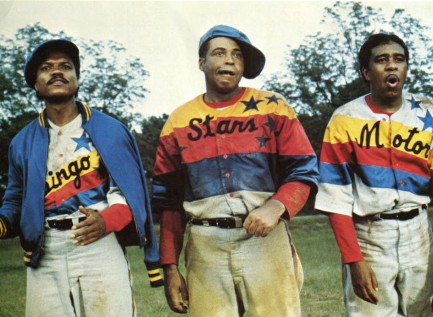 one aspect of the film hits a bullseye. James Earl Jones expresses it succinctly when he hears that the Major Leagues are scouting black players: “So the white man is finally moving in,” he says, as if speaking about the mafia. He goes on to predict the death of Negro League Baseball. Jones's point is crystalline: the Major Leagues broke the color line not out of altruism or justice, but in order to protect its product. one aspect of the film hits a bullseye. James Earl Jones expresses it succinctly when he hears that the Major Leagues are scouting black players: “So the white man is finally moving in,” he says, as if speaking about the mafia. He goes on to predict the death of Negro League Baseball. Jones's point is crystalline: the Major Leagues broke the color line not out of altruism or justice, but in order to protect its product.
The oldest Negro League team had been around since 1885. By the 1940s Negro League players had competed against white players and proved to be capable, and in some instances, superior. MLB had a legitimacy problem. It couldn't truly claim to contain all the best baseball players. People were growing more interested in black baseball. Money was being made on the sport beyond the confines of MLB. A lot of money. Breaking the color line cemented the legitimacy of MLB's talent claims, and it obliterated competition from Negro League baseball, which died on the vine. Today black ownership in Major League Baseball is basically 0%. Only the Miami Marlins, with Derek Jeter possessing 4% of the club, can claim—and just barely—to have minority ownership. But a merger of Negro teams into the league rather than a raid of players might well have led to a different story. MLB integrated the field, but ensured future segregation of the owner's box.
Though the color line for players was broken all the way back in 1947, today MLB has another legitimacy problem. Black participation has declined over the decades. Organized baseball requires fields, equipment, sponsorship, and other elements that are scarce in poor communities. Of course, they've always been scarce, but as public money dries up and individual wages stagnate, community support for baseball and family income allowing for participation in it are lacking. African American rostering on Major League Baseball squads is at 1956 levels. Many consider that a travesty; but America being America, many don't. MLB's front office just lately has made some minimal efforts to address the problem. It will be interesting to see how those go. The Bingo Long Traveling All-Stars and Motor Kings premiered in the U.S. today in 1976. 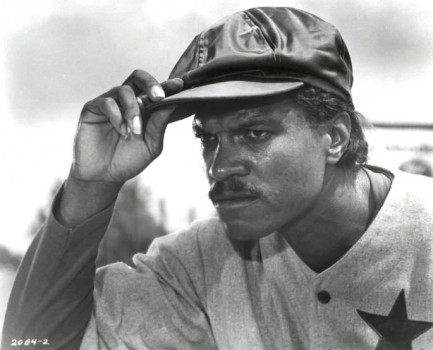 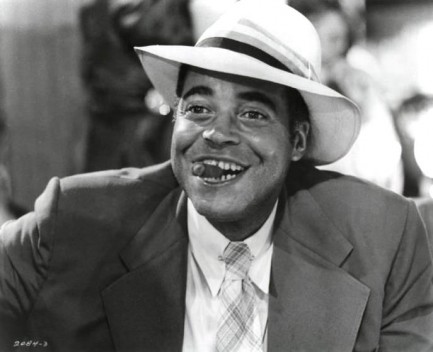 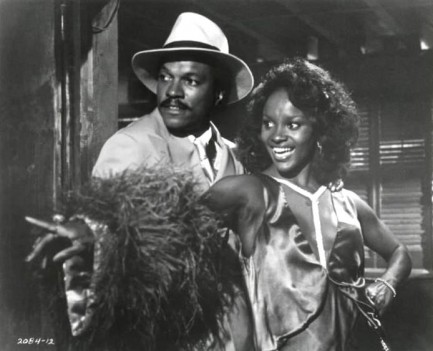 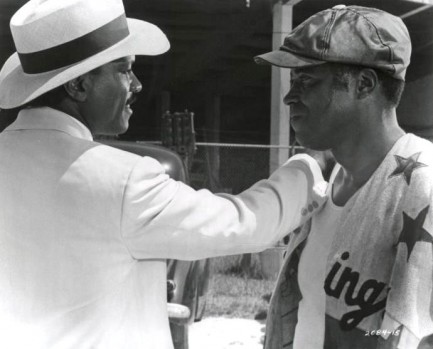 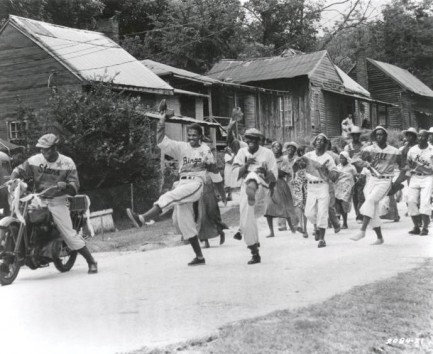 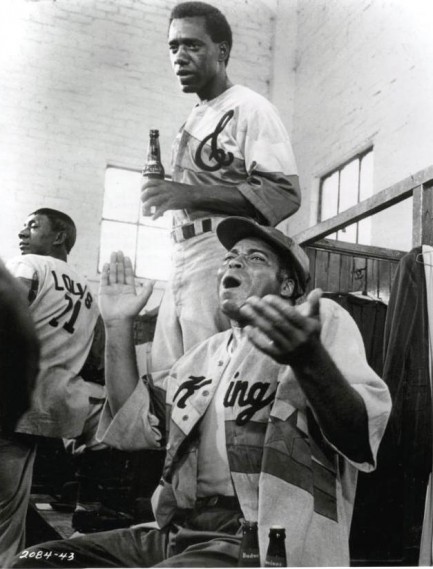 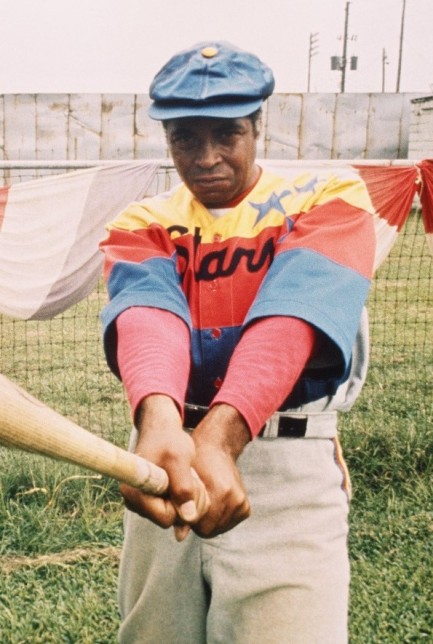
 Tonight they're gonna party like it's 1955. 
Questions abound on this cover of Inside Story, but for each one there's an answer. What did Prince Rainier not tell Grace Kelly? That the palace in Monaco was cold and drafty, and she couldn't sleep in the nude anymore because the premises were open to the public from 9 to 5. What was the amazing Frank Sinatra hoax? His studio Carlyle Productions started a whisper campaign that he was such a dedicated actor that he actually used heroin while filming the heroin drama The Man with the Golden Arm. What is the secret fear that haunts Perry Como? That his family might be kidnapped.
All of these pieces are fascinating, but since it's baseball season and people are high on the front-running New York Yankees right now, we'll point to the story, “The Real Reason the Yankees Lost!” What they lost was the 1955 World Series, and it happened—according to Inside Story—because they were partying too hard. They were ensconced at the Concourse Hotel for the Series, a hole-up made possible by the fact that their opponents were the Brooklyn Dodgers. So with both the home and away games taking place in New York City, and the players barred from sleeping in their own houses to avoid family distractions, the superstar Yanks did some major league carousing.
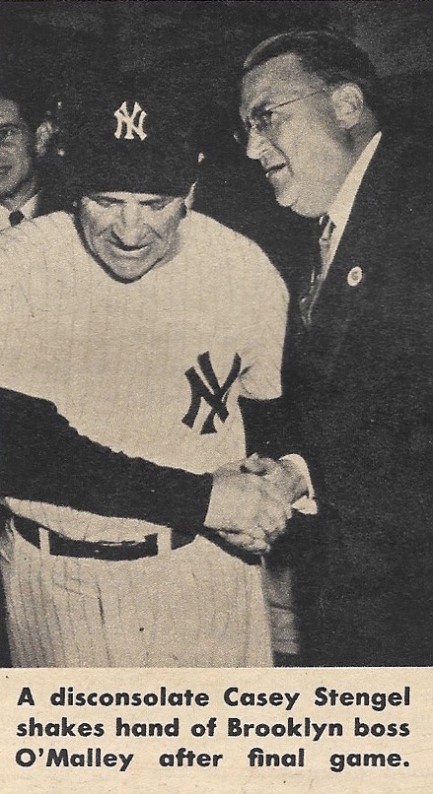 Inside Story scribe Manuel Shaw describes an allegedly typical scene: “Mickey Mantle, Phil Rizzuto, and several other Yankees were sitting around the lobby of the hotel when three lovelies from a nearby night spot showed up. Since the cuties were entertainers familiar to one or two of the players, and were rabid Yankees boosters, it was not remarkable that they were soon in animated conversation with the group, which shortly adjourned from the lobby to an upstairs suite.” Inside Story scribe Manuel Shaw describes an allegedly typical scene: “Mickey Mantle, Phil Rizzuto, and several other Yankees were sitting around the lobby of the hotel when three lovelies from a nearby night spot showed up. Since the cuties were entertainers familiar to one or two of the players, and were rabid Yankees boosters, it was not remarkable that they were soon in animated conversation with the group, which shortly adjourned from the lobby to an upstairs suite.”
Then he moves into this bit: “A beauteous brunette [was in the hall] clad only in a negligee. The two players wanted to spend some time with her, and they agreed that they would rather do it separately, but she insisted it would be more fun if they both stayed, and after a while she persuaded both of them to come back with her to her room. Soon a real party was underway, joined by many other Yankees, and several doting females who lived at the hotel.”
Well, what good is being a member of the famed Yankees if you can't do some Yankee doodle diddling? Most guys we know can't resist a free beer, let alone a woman in lingerie. A little later in the story, after the question of whether professional gamblers employed the party girls to distract the Yanks, we get this: “If true, this parallels the persistent story in gambling and diamond circles that the voluptuous Marilyn Monroe was introduced to Yankee star Joe DiMaggio just in order to take his attention off the Yankee pennant drive of a few years back.”
Did Inside Story really just say Marilyn Monroe was a mafia Trojan horse? Yup. They did. No ambiguity there. The magazine does not go so far as to say Monroe was aware of the set-up, so perhaps it was a matter of maneuvering her into the same space as DiMaggio at the same time and letting nature take its course. There are worse ways for a man to fall from the sporting mountaintop. And talk about a soft landing. We doubt the story, but you never know. There are far crazier tales starring Monroe. We have about thirty-five scans below, and more tabloids coming soon. 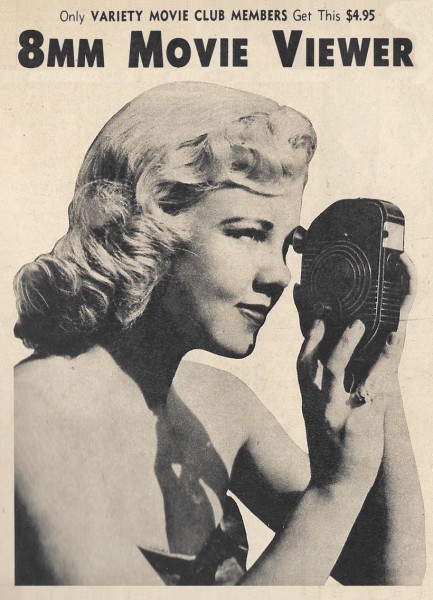 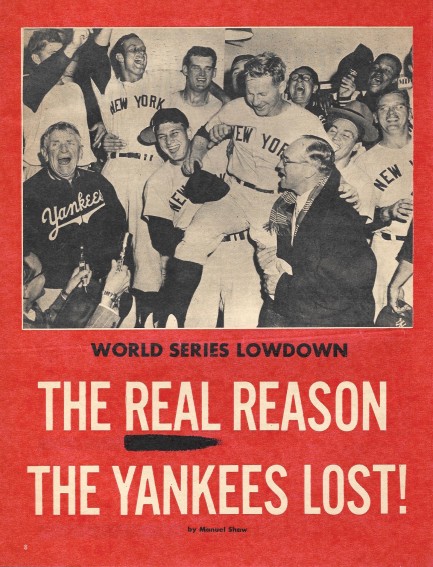 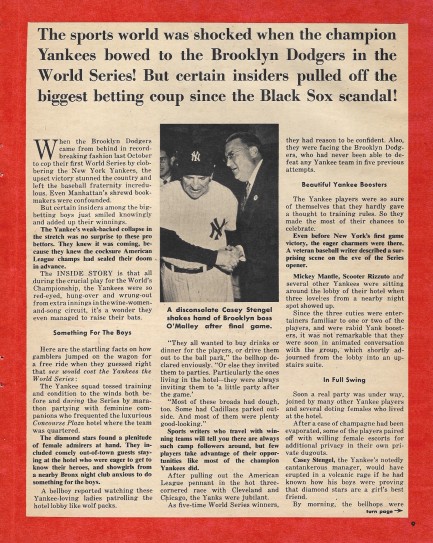 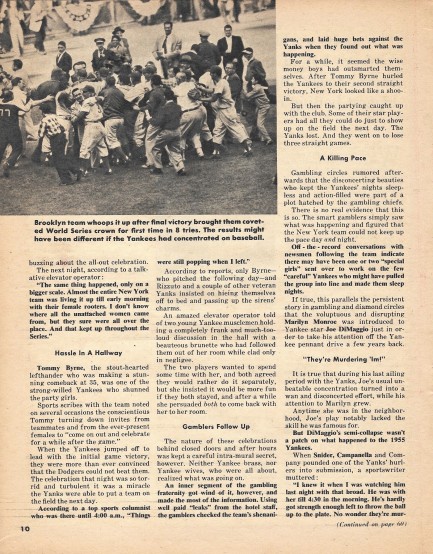 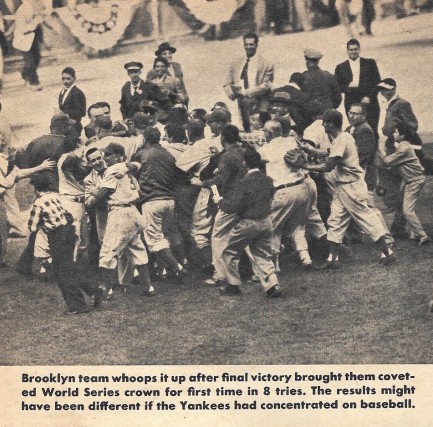 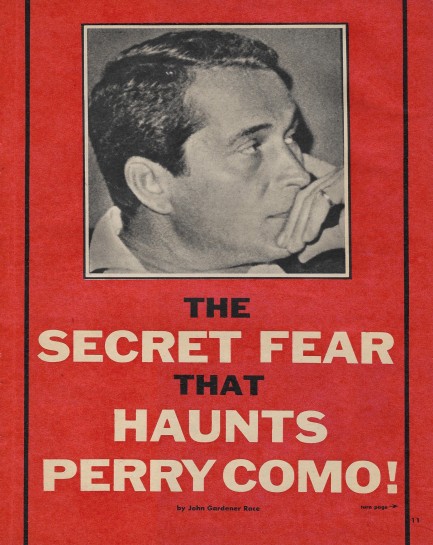 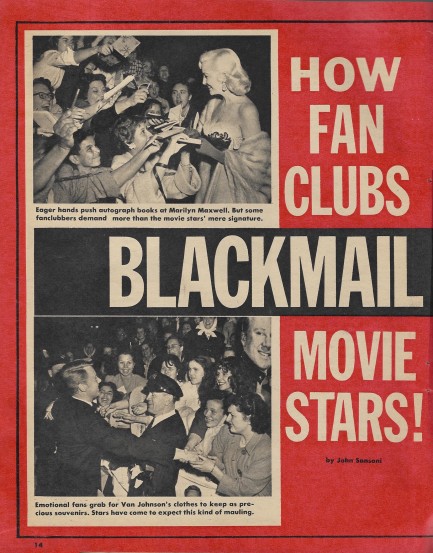 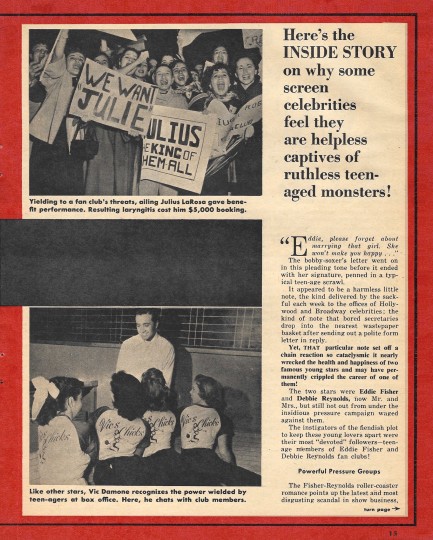 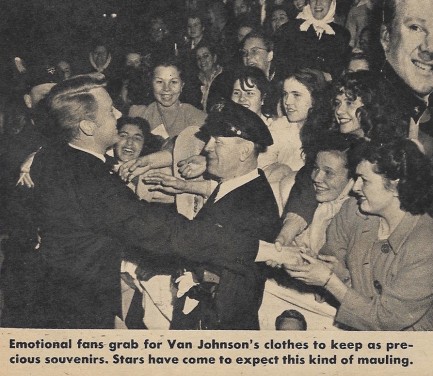 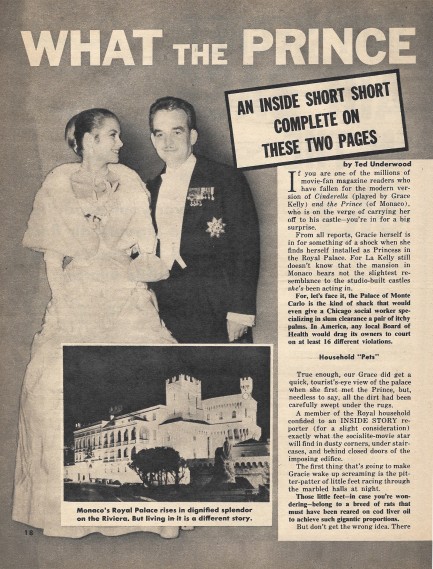   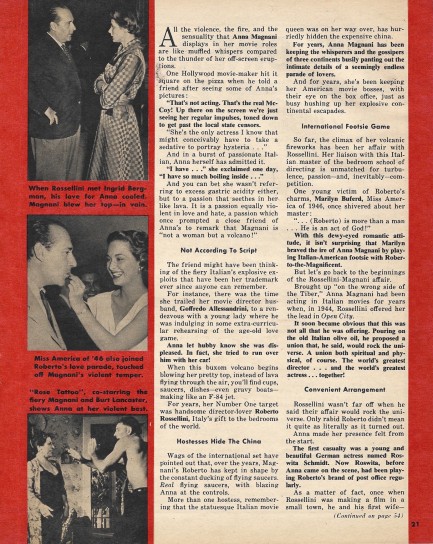   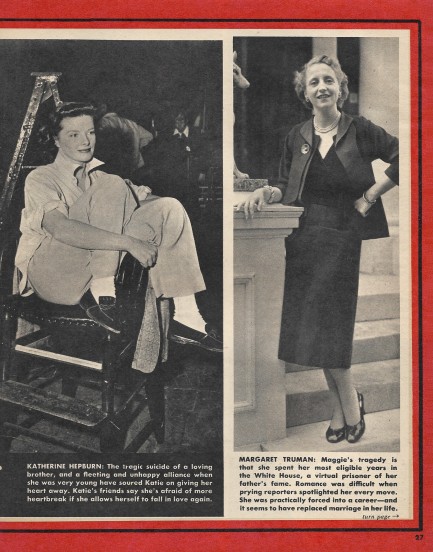 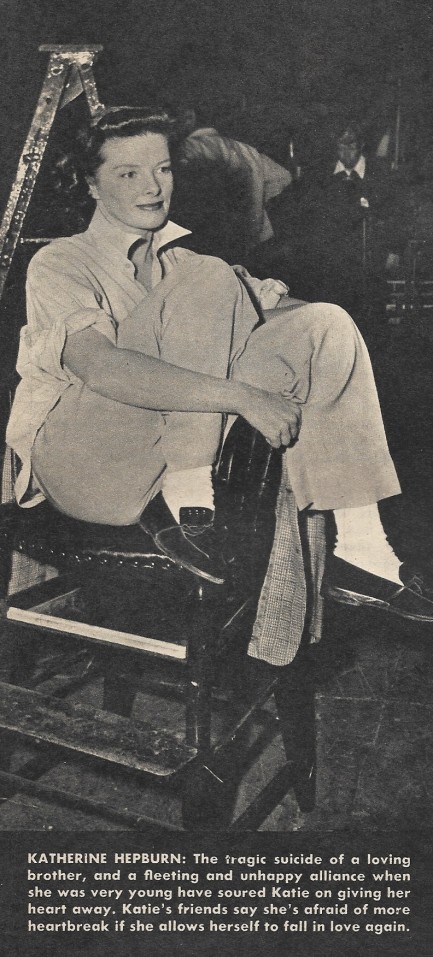 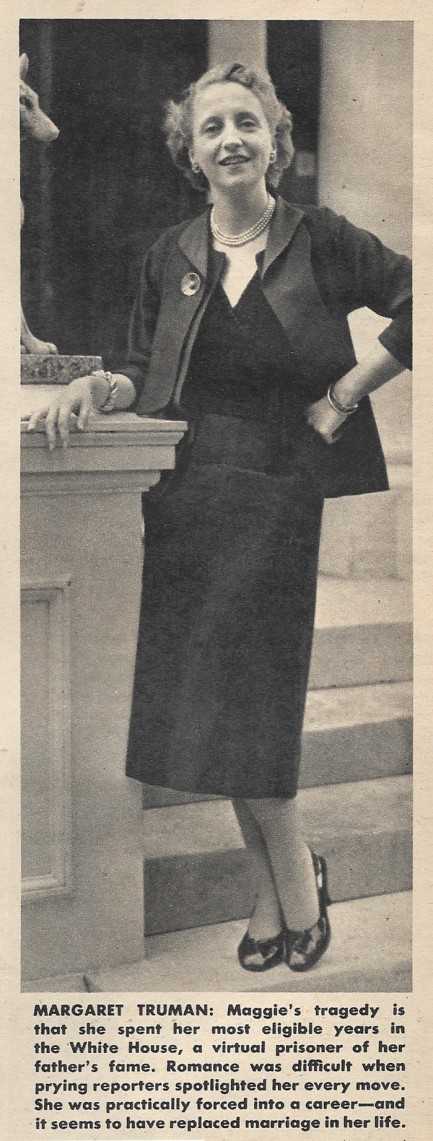 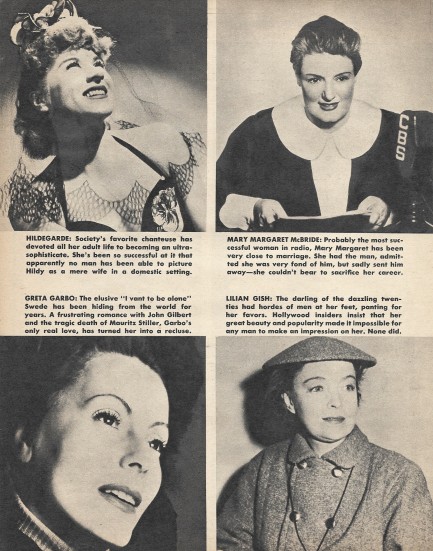 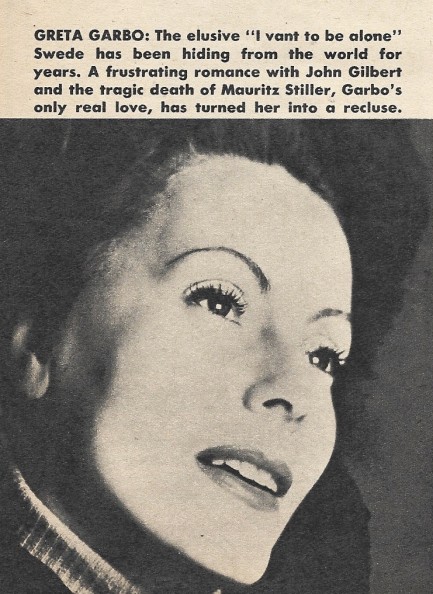 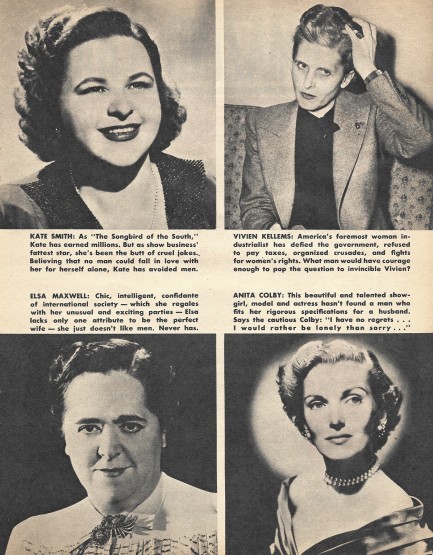 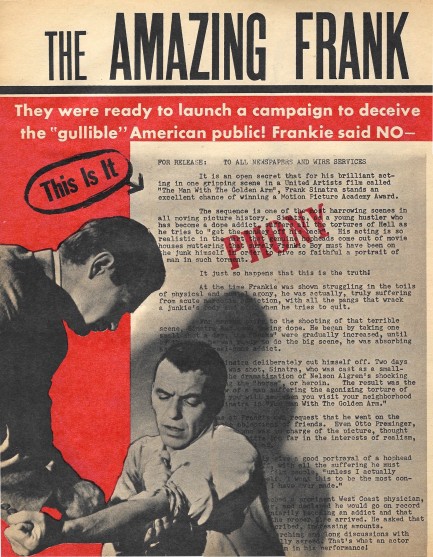 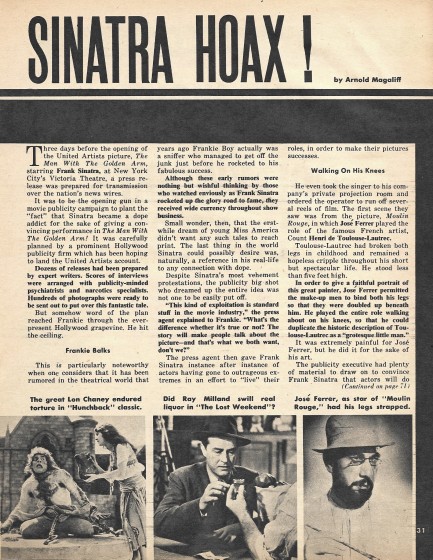 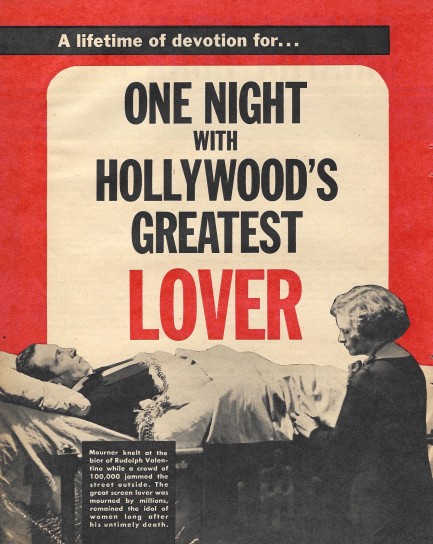 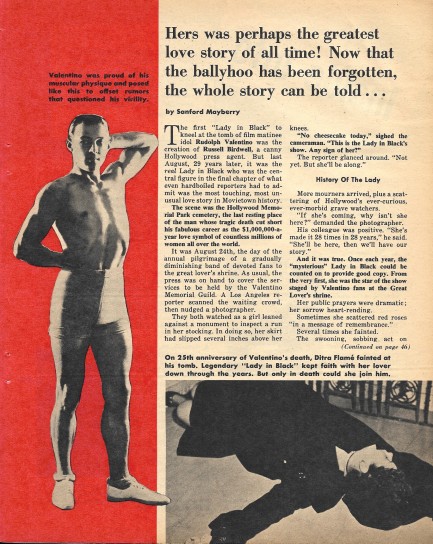  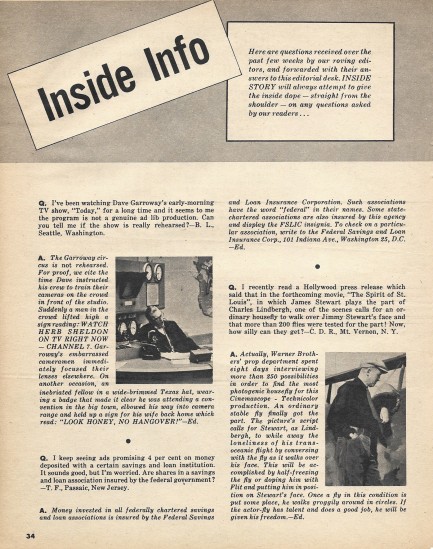 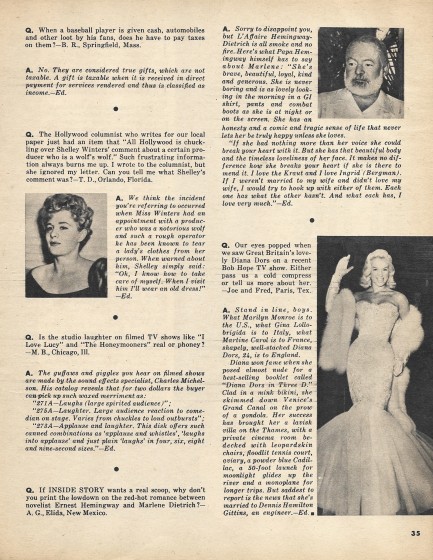 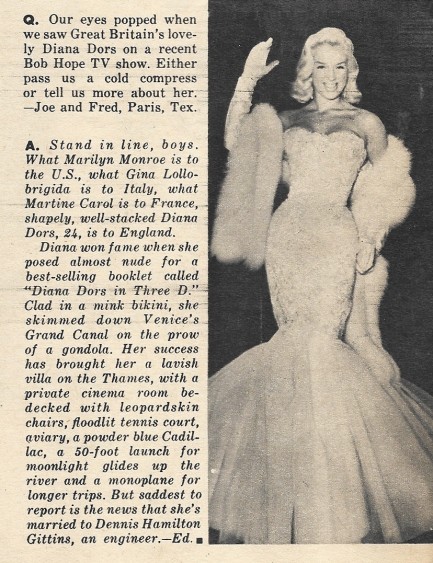 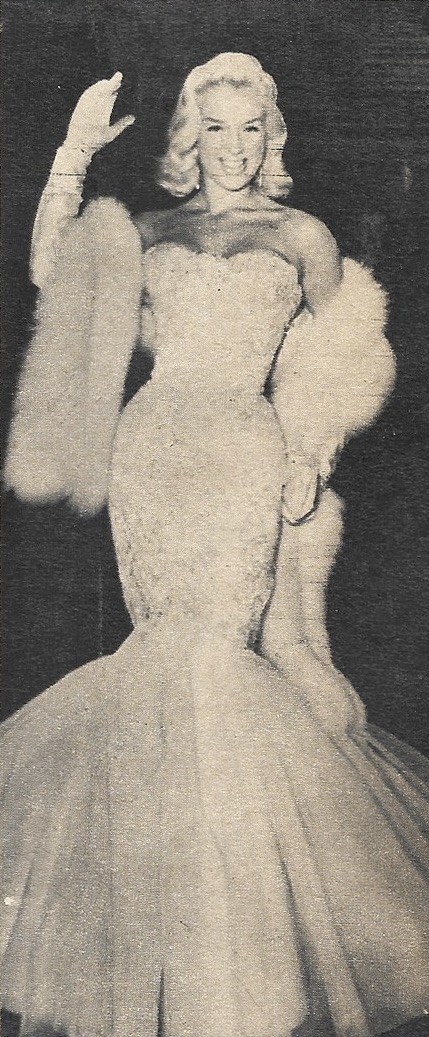 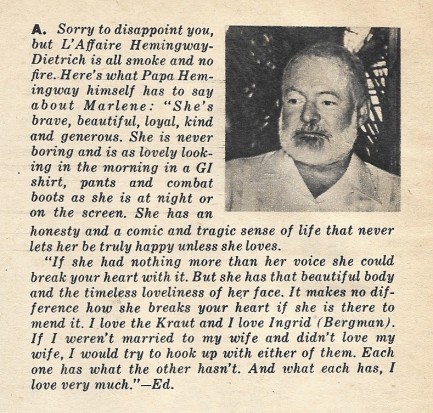 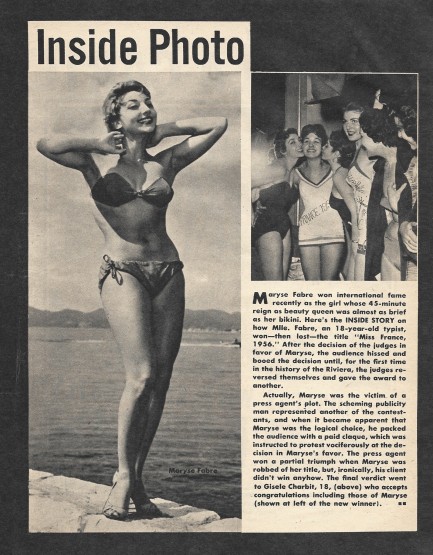 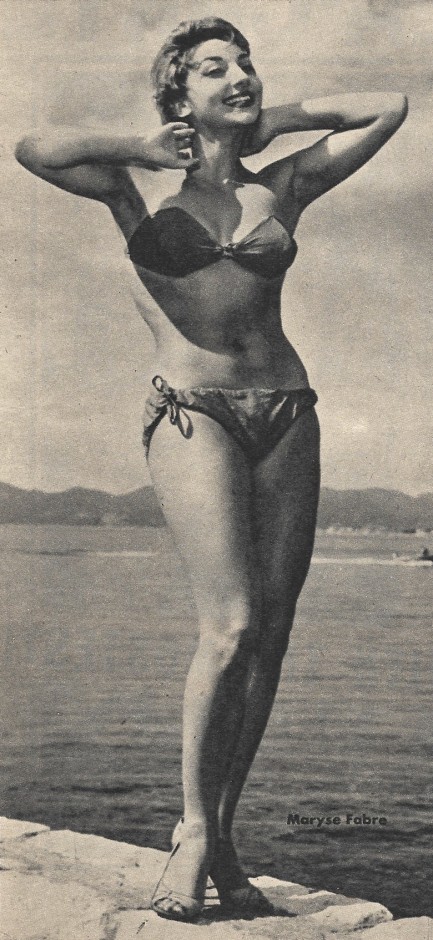  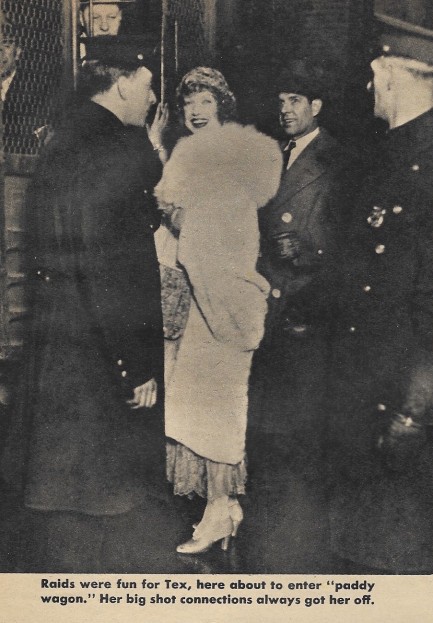 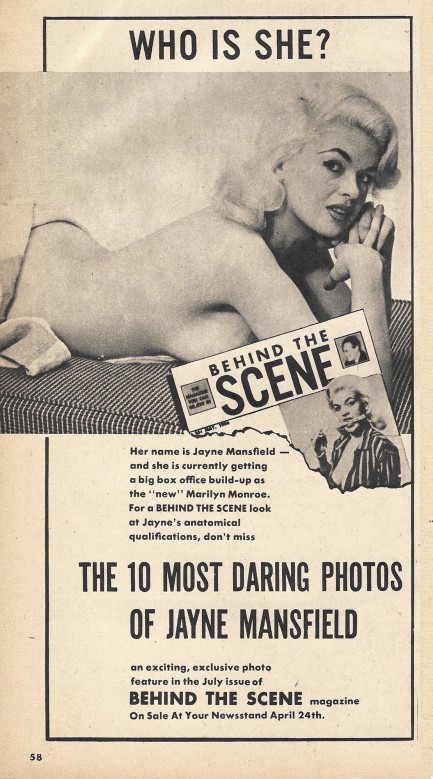
 The boys of summer headline autumn’s biggest event. 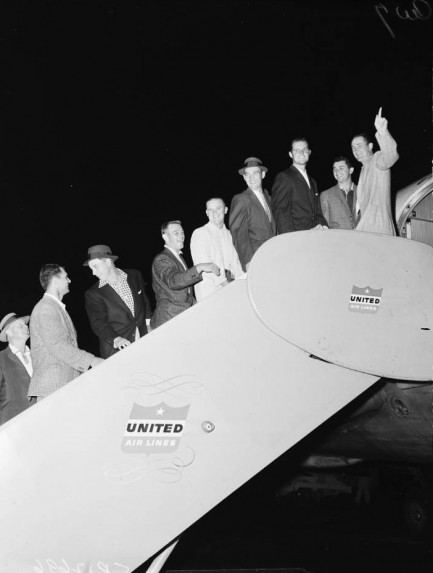
The Los Angeles Dodgers board a United Airlines DC-7 charter plane headed to Chicago, where they would battle the Chicago White Sox in the 1959 World Series. Pictured are Sandy Koufax, Don Zimmer, Pee Wee Reese, and other stars. The Dodgers won the series four games to two. The three games played at the Los Angeles Memorial Coliseum drew huge crowds, with game five’s attendance of 92,706 remaining a World Series record to this day. The photo was made today in 1959.
 Who, this jerk? I just work with him. 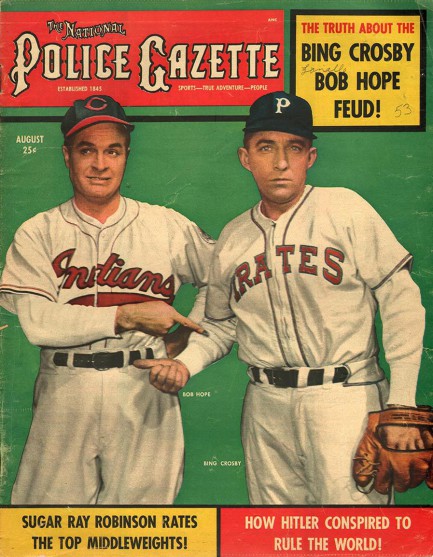
This awesome August 1953 National Police Gazette featuring Bob Hope and Bing Crosby cut-and-pasted into baseball uniforms came from the website Ephemera Forever, which we had no idea existed until today. It’s a nice spot, and claims to have more than 22,000 rare items. The prices? Well, those are high. But you can always browse, at least. As far as the Hope/Crosby feud mentioned on the cover, different sources make claims of everything from full blown mutual hatred to the two using rumors of discord as a publicity stunt. However Hope did once reveal that Crosby never once invited him and his wife over for dinner, which seems like a pretty strong clue. See much more from Police Gazette in our tabloid index.
 If I can’t have you, nobody else can. 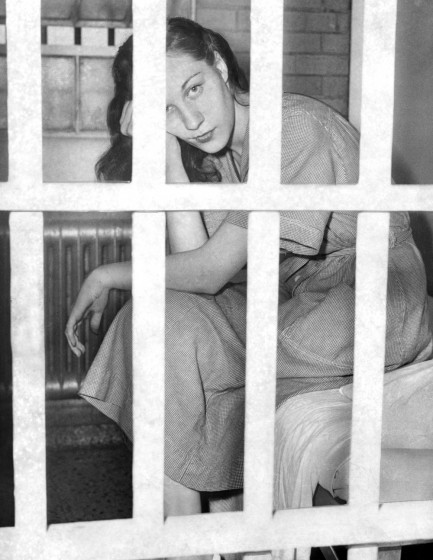
The above photo shows Ruth Ann Steinhagen in Chicago’s Cook County Jail, where she was being held after shooting Chicago Cubs baseball player Eddie Waitkus at the Edgewater Beach Hotel. Steinhagen had invited Waitkus to her hotel room after a Cubs game, first via a note telling him she had an urgent matter to discuss with him, and later by phone. When he finally went to her room she told him (though accounts vary), “If I can’t have you nobody else can,” and shot him in the chest with a .22 rifle she had grabbed from a closet. Steinhagen was an early example of a new breed of psycho—the celebrity stalker. The story of Waitkus’s shooting would later be used by author Bernard Malamud for his 1952 novel The Natural, which was in turn made into a truly excellent 1984 movie with Robert Redford. The jail photo was made today in 1949, and the shooting had happened two days earlier.

|
 |

The headlines that mattered yesteryear.
2003—Hope Dies
Film legend Bob Hope dies of pneumonia two months after celebrating his 100th birthday. 1945—Churchill Given the Sack
In spite of admiring Winston Churchill as a great wartime leader, Britons elect
Clement Attlee the nation's new prime minister in a sweeping victory for the Labour Party over the Conservatives. 1952—Evita Peron Dies
Eva Duarte de Peron, aka Evita, wife of the president of the Argentine Republic, dies from cancer at age 33. Evita had brought the working classes into a position of political power never witnessed before, but was hated by the nation's powerful military class. She is lain to rest in Milan, Italy in a secret grave under a nun's name, but is eventually returned to Argentina for reburial beside her husband in 1974. 1943—Mussolini Calls It Quits
Italian dictator Benito Mussolini steps down as head of the armed forces and the government. It soon becomes clear that Il Duce did not relinquish power voluntarily, but was forced to resign after former Fascist colleagues turned against him. He is later installed by Germany as leader of the Italian Social Republic in the north of the country, but is killed by partisans in 1945.
|

|
|

It's easy. We have an uploader that makes it a snap. Use it to submit your art, text, header, and subhead. Your post can be funny, serious, or anything in between, as long as it's vintage pulp. You'll get a byline and experience the fleeting pride of free authorship. We'll edit your post for typos, but the rest is up to you. Click here to give us your best shot.

|
|


















































































































 one aspect of the film hits a bullseye. James Earl Jones expresses it succinctly when he hears that the Major Leagues are scouting black players: “So the white man is finally moving in,” he says, as if speaking about the mafia. He goes on to predict the death of Negro League Baseball. Jones's point is crystalline: the Major Leagues broke the color line not out of altruism or justice, but in order to protect its product.
one aspect of the film hits a bullseye. James Earl Jones expresses it succinctly when he hears that the Major Leagues are scouting black players: “So the white man is finally moving in,” he says, as if speaking about the mafia. He goes on to predict the death of Negro League Baseball. Jones's point is crystalline: the Major Leagues broke the color line not out of altruism or justice, but in order to protect its product.








 Inside Story scribe Manuel Shaw describes an allegedly typical scene: “Mickey Mantle, Phil Rizzuto, and several other Yankees were sitting around the lobby of the hotel when three lovelies from a nearby night spot showed up. Since the cuties were entertainers familiar to one or two of the players, and were rabid Yankees boosters, it was not remarkable that they were soon in animated conversation with the group, which shortly adjourned from the lobby to an upstairs suite.”
Inside Story scribe Manuel Shaw describes an allegedly typical scene: “Mickey Mantle, Phil Rizzuto, and several other Yankees were sitting around the lobby of the hotel when three lovelies from a nearby night spot showed up. Since the cuties were entertainers familiar to one or two of the players, and were rabid Yankees boosters, it was not remarkable that they were soon in animated conversation with the group, which shortly adjourned from the lobby to an upstairs suite.”










































